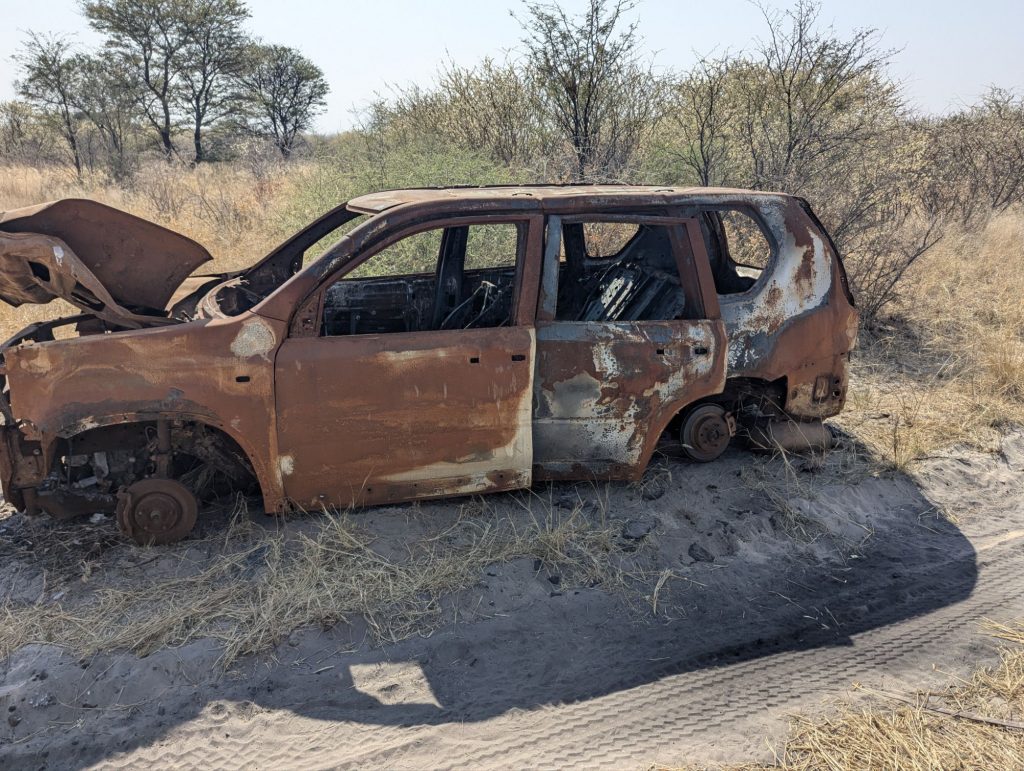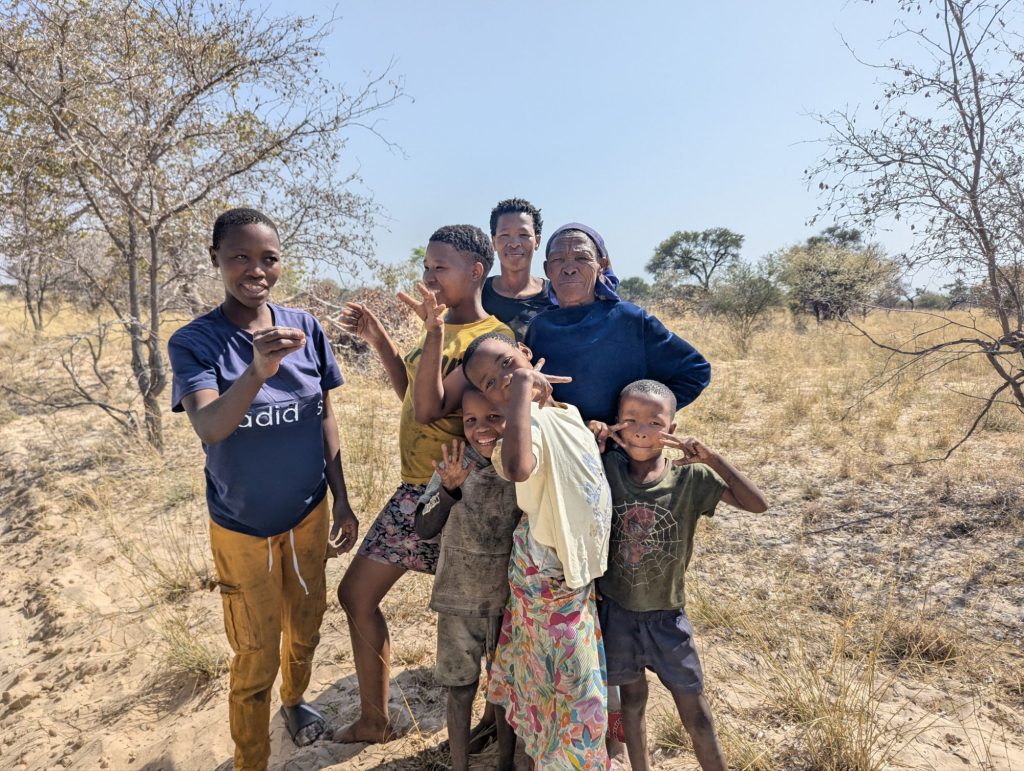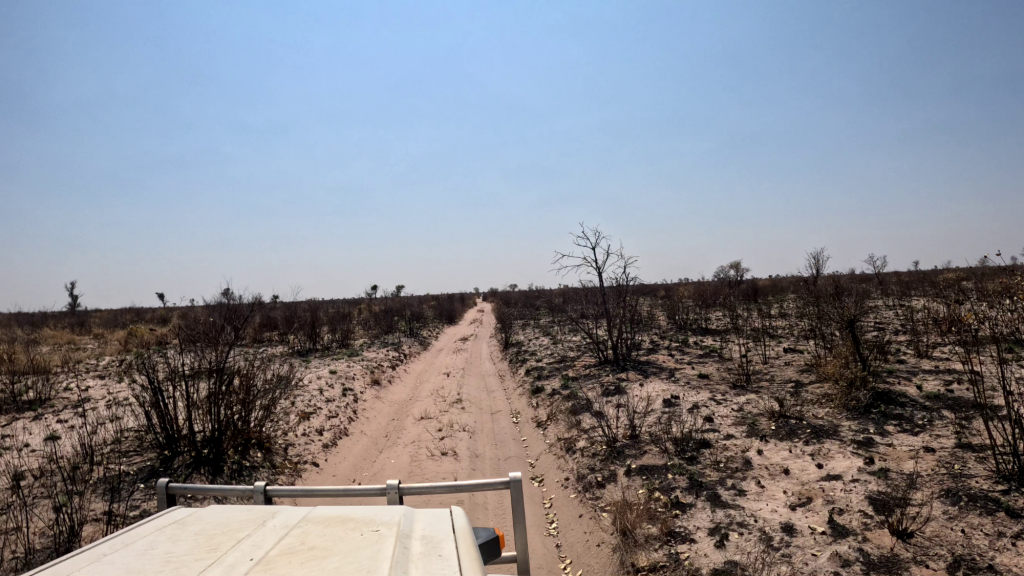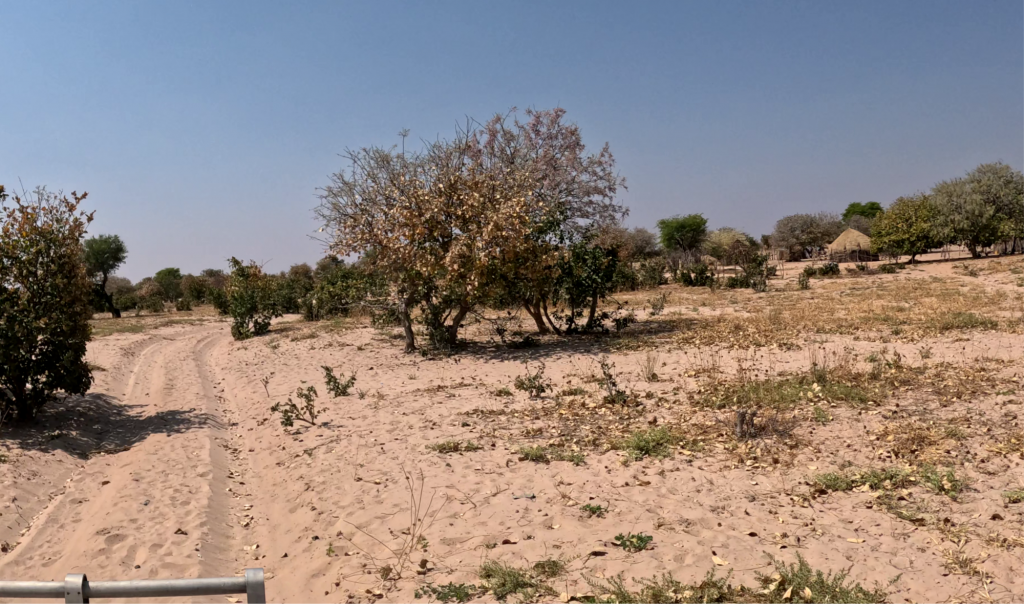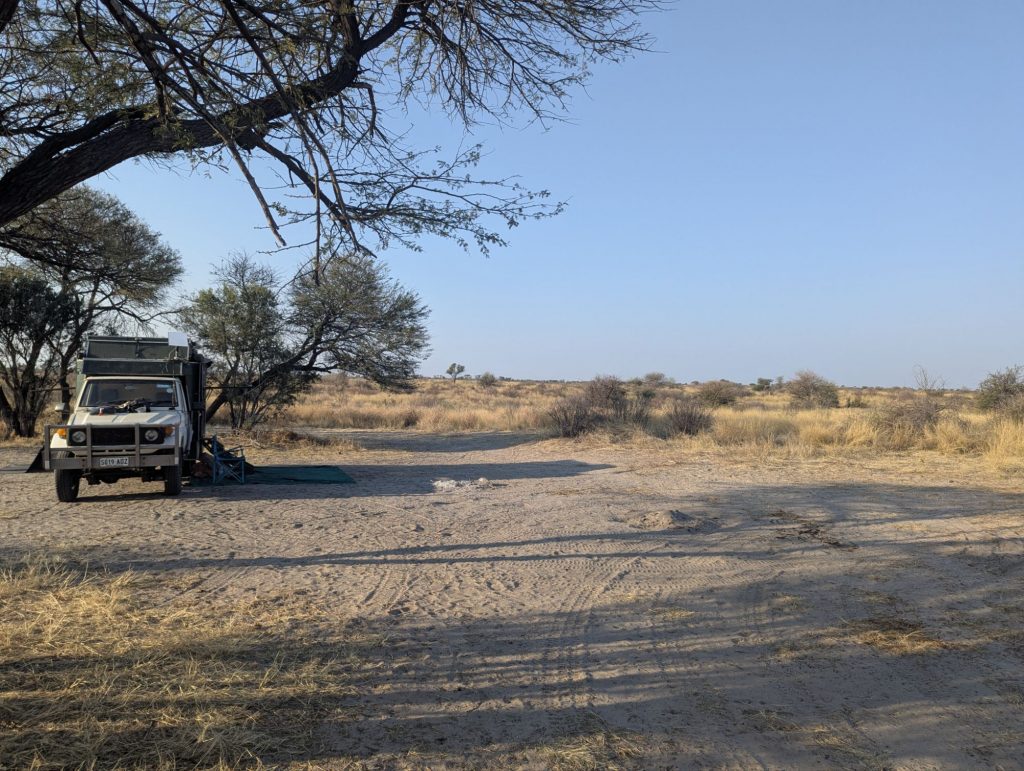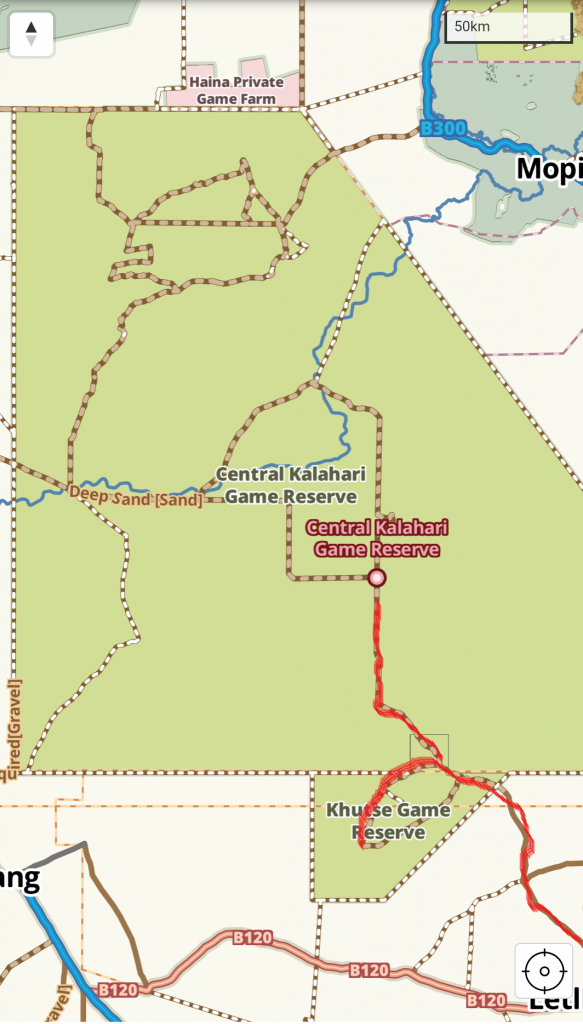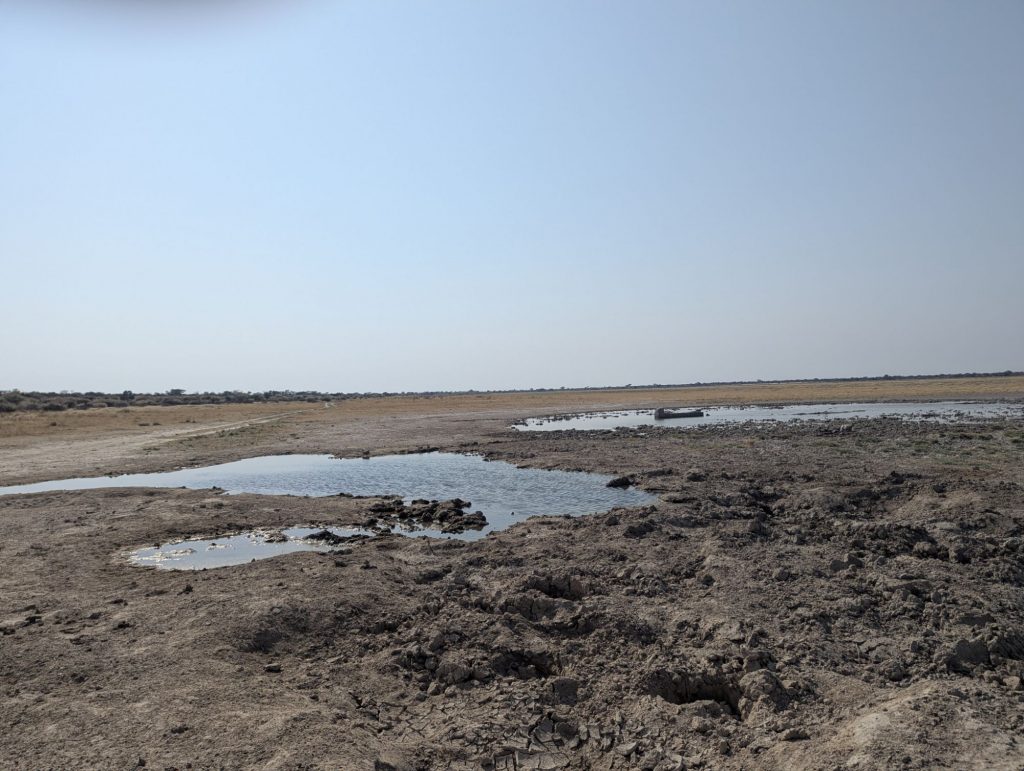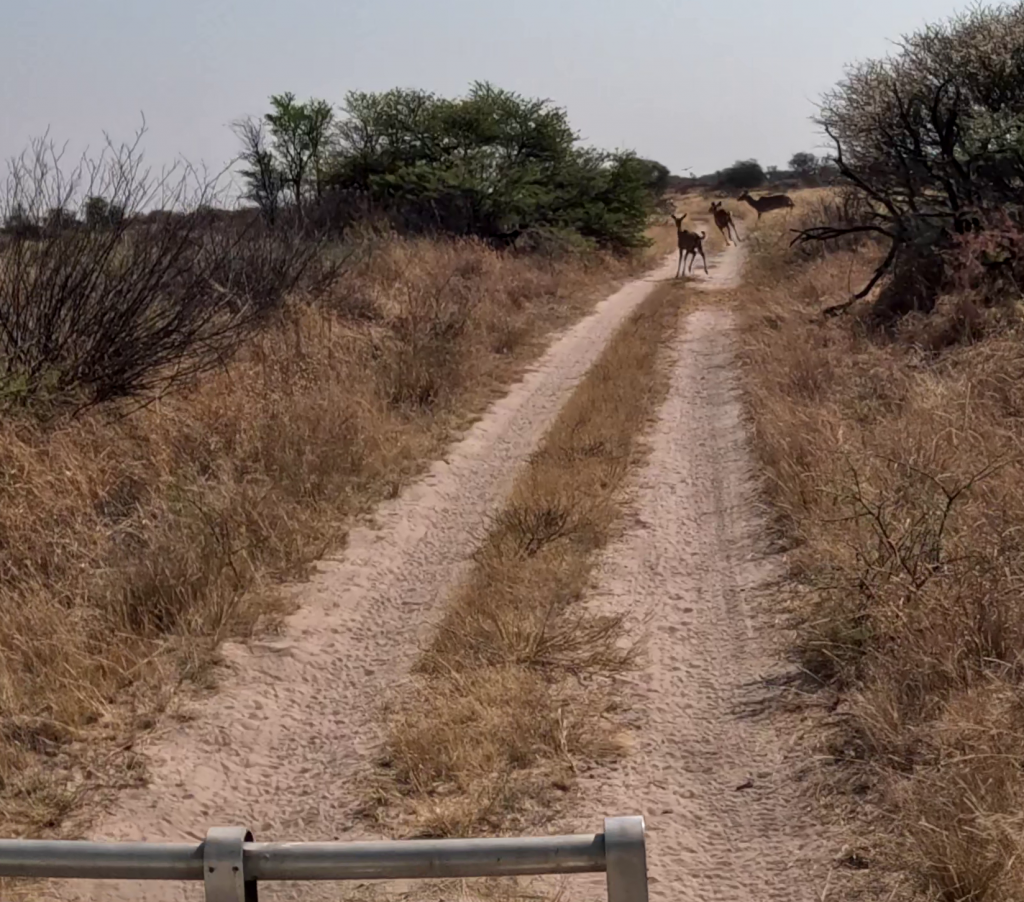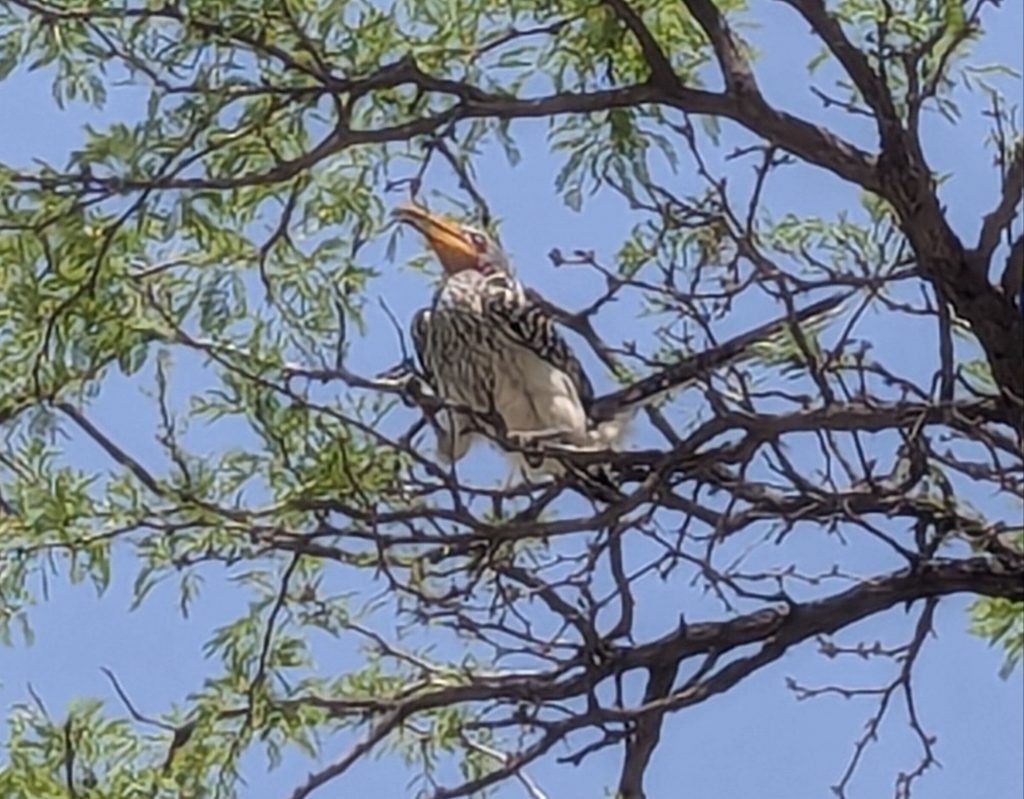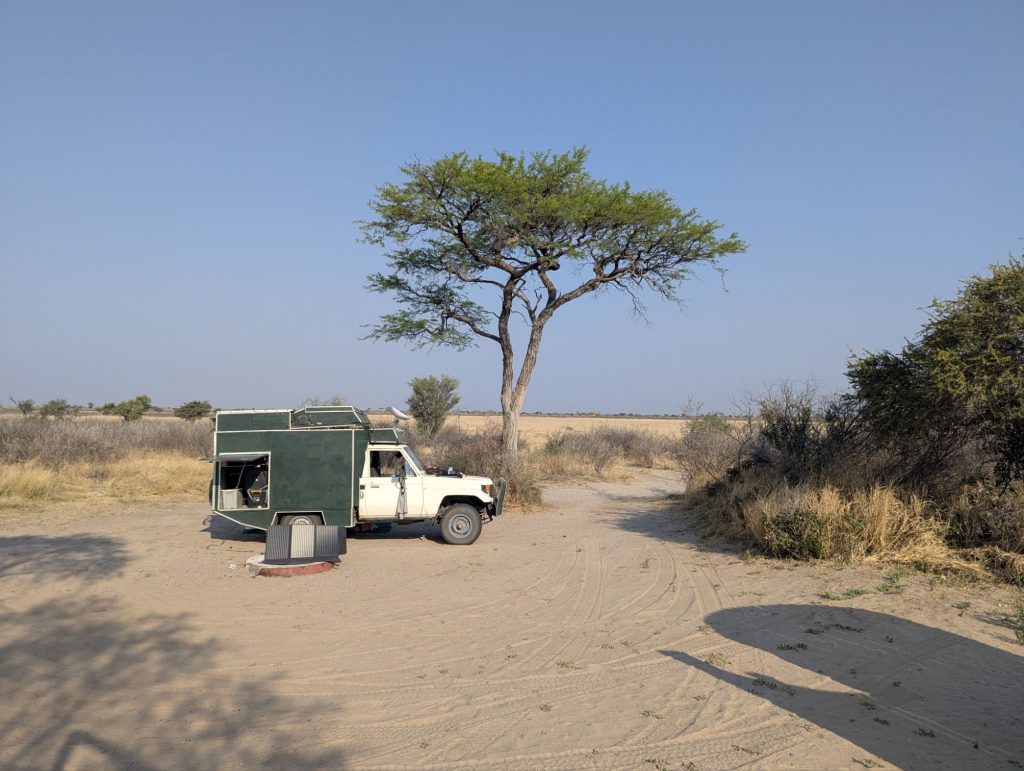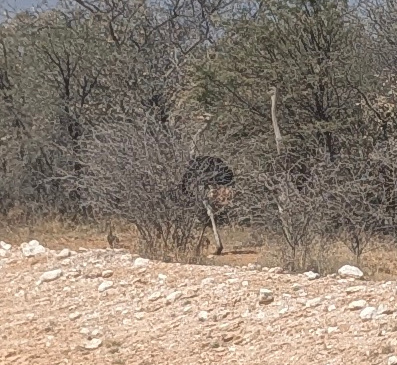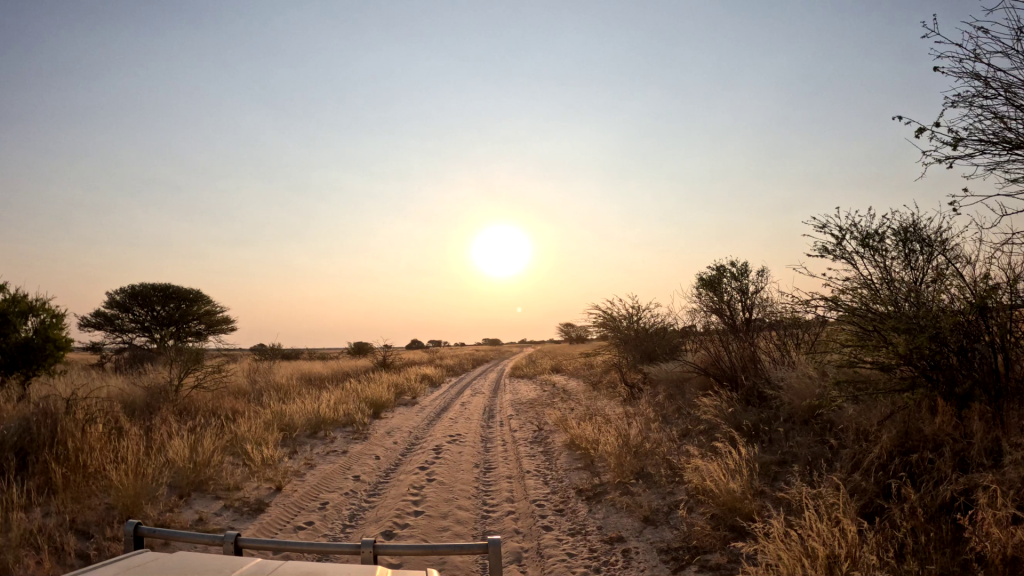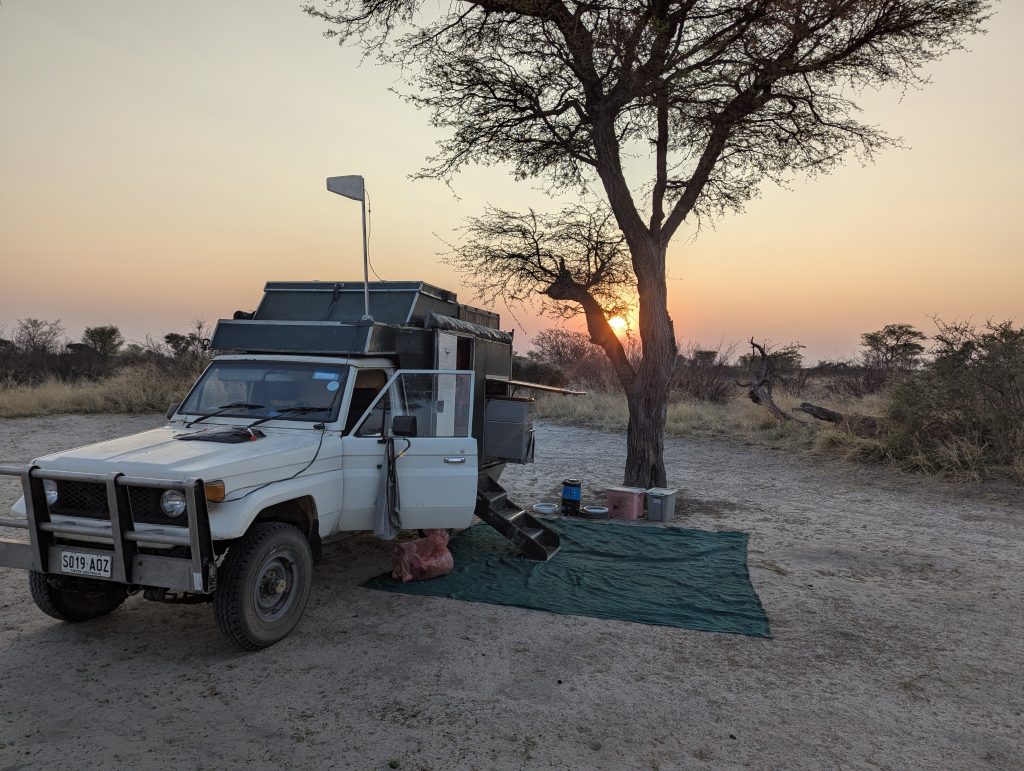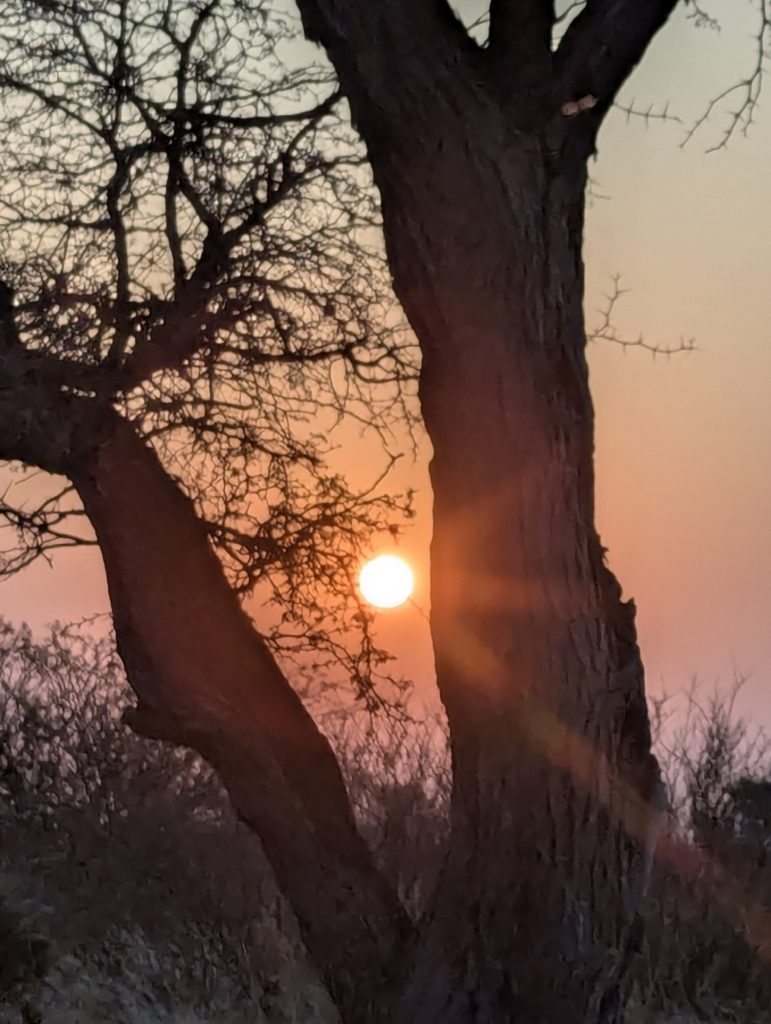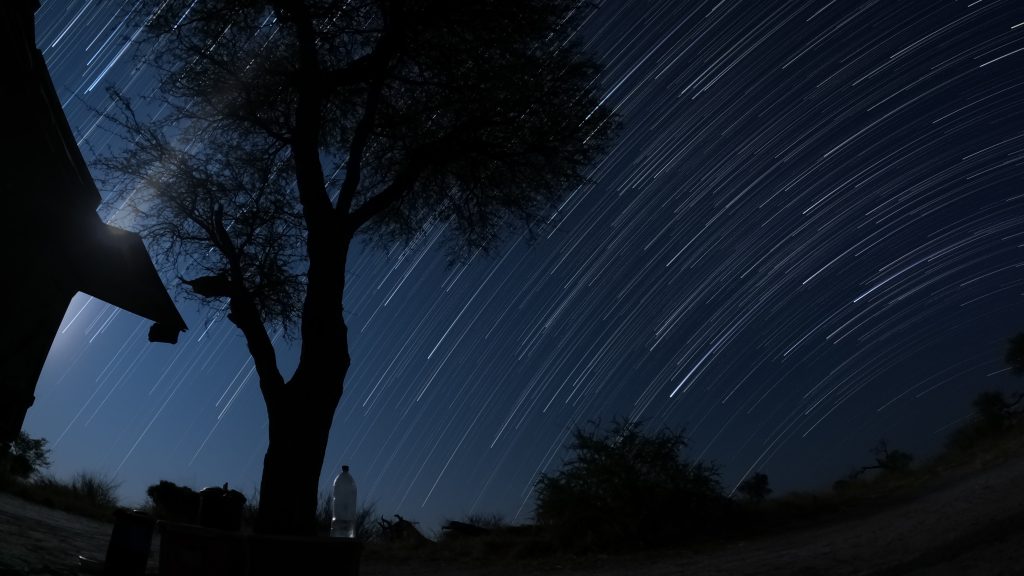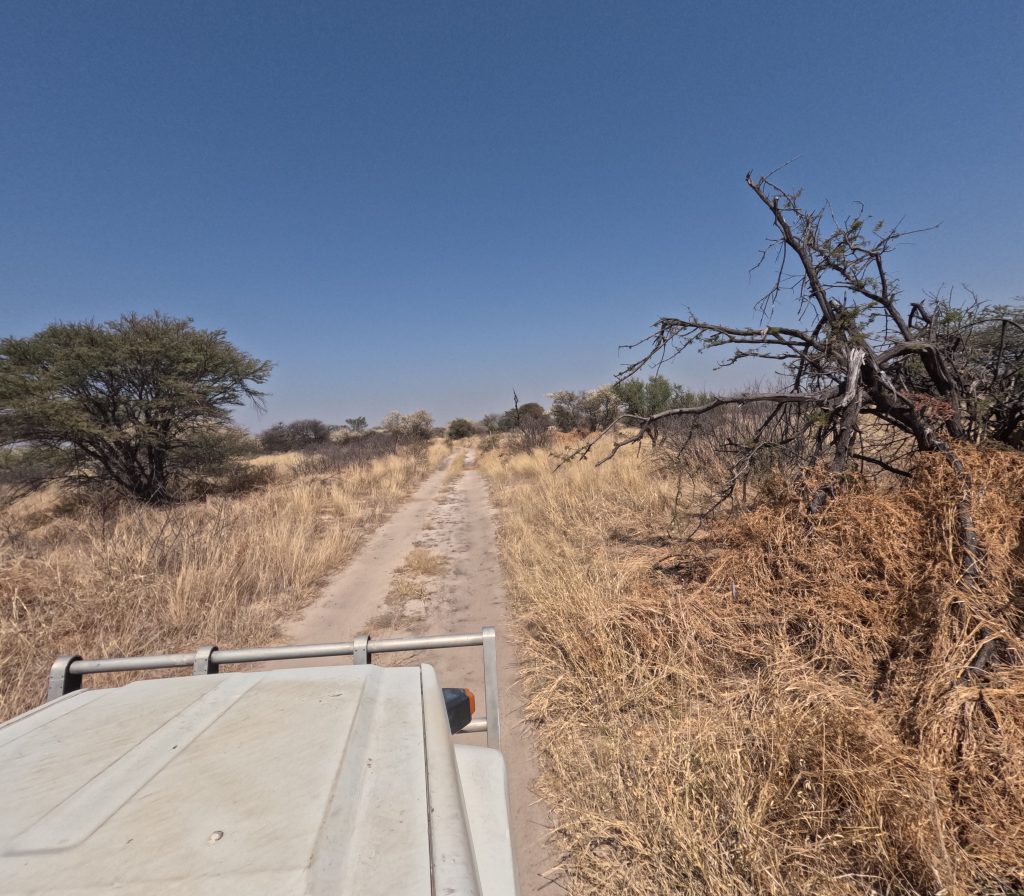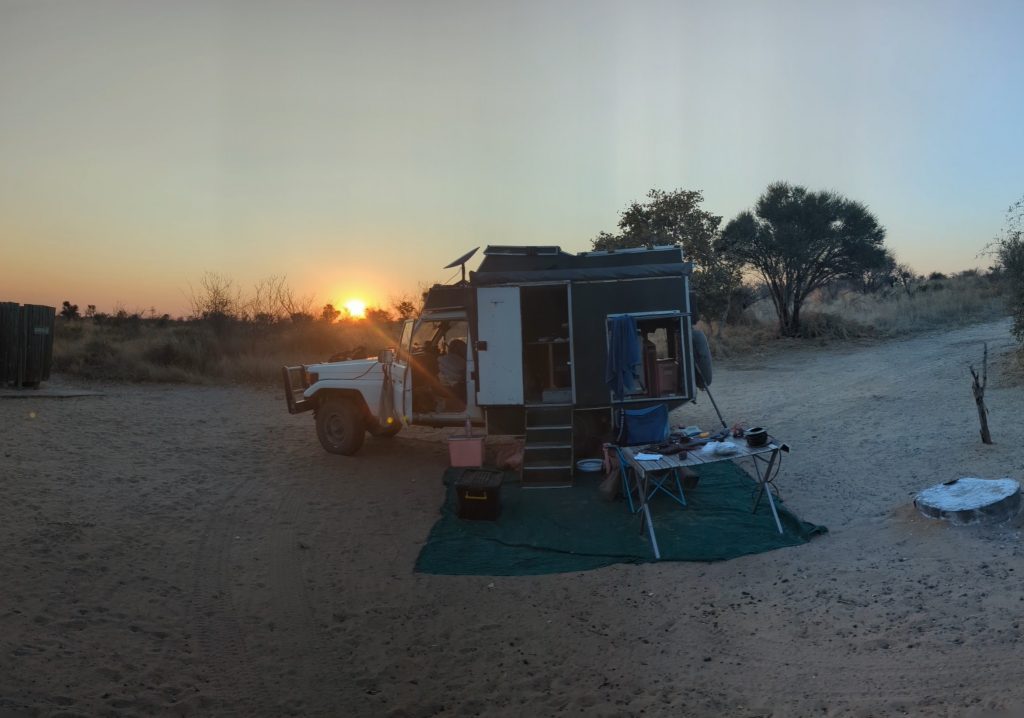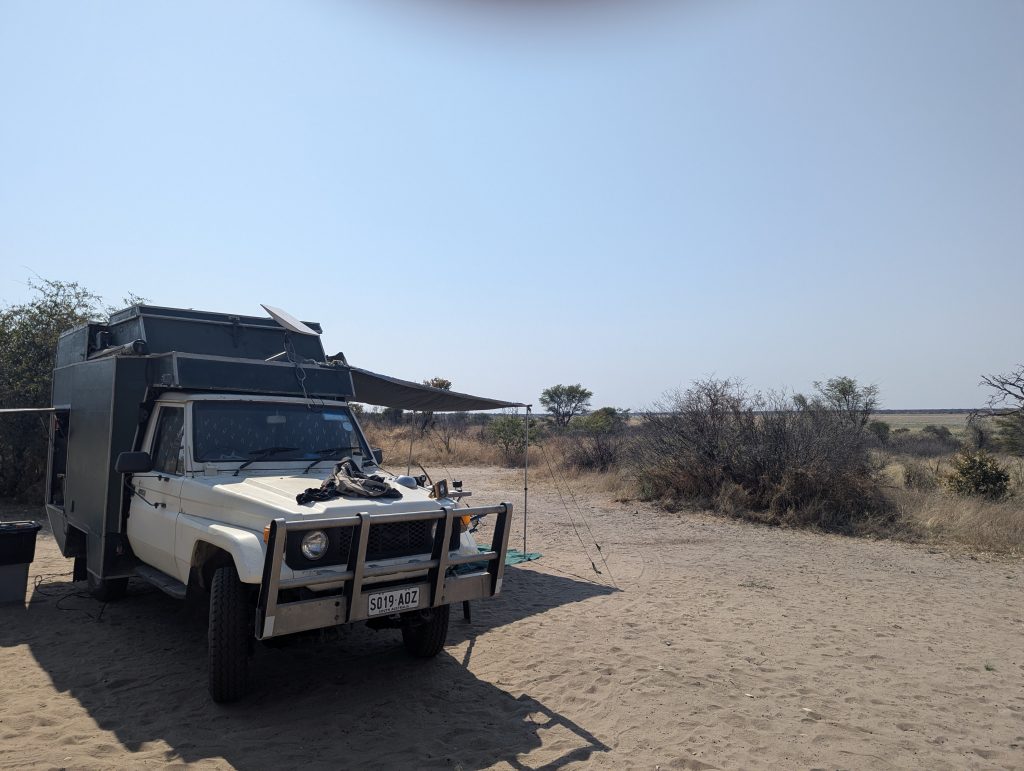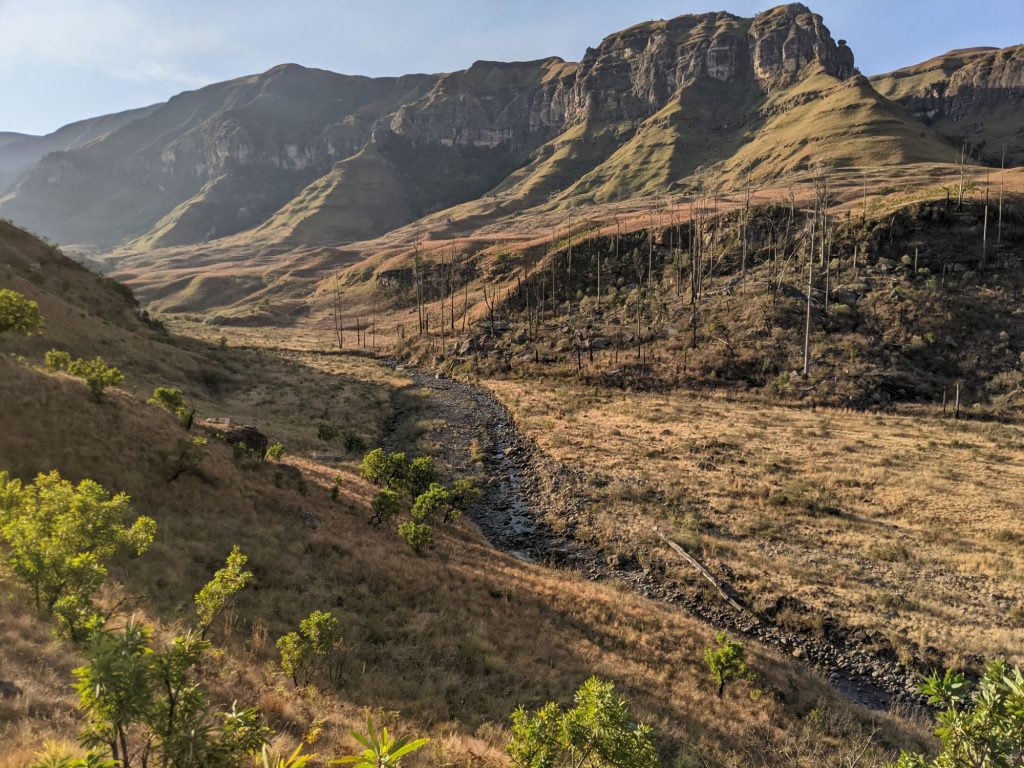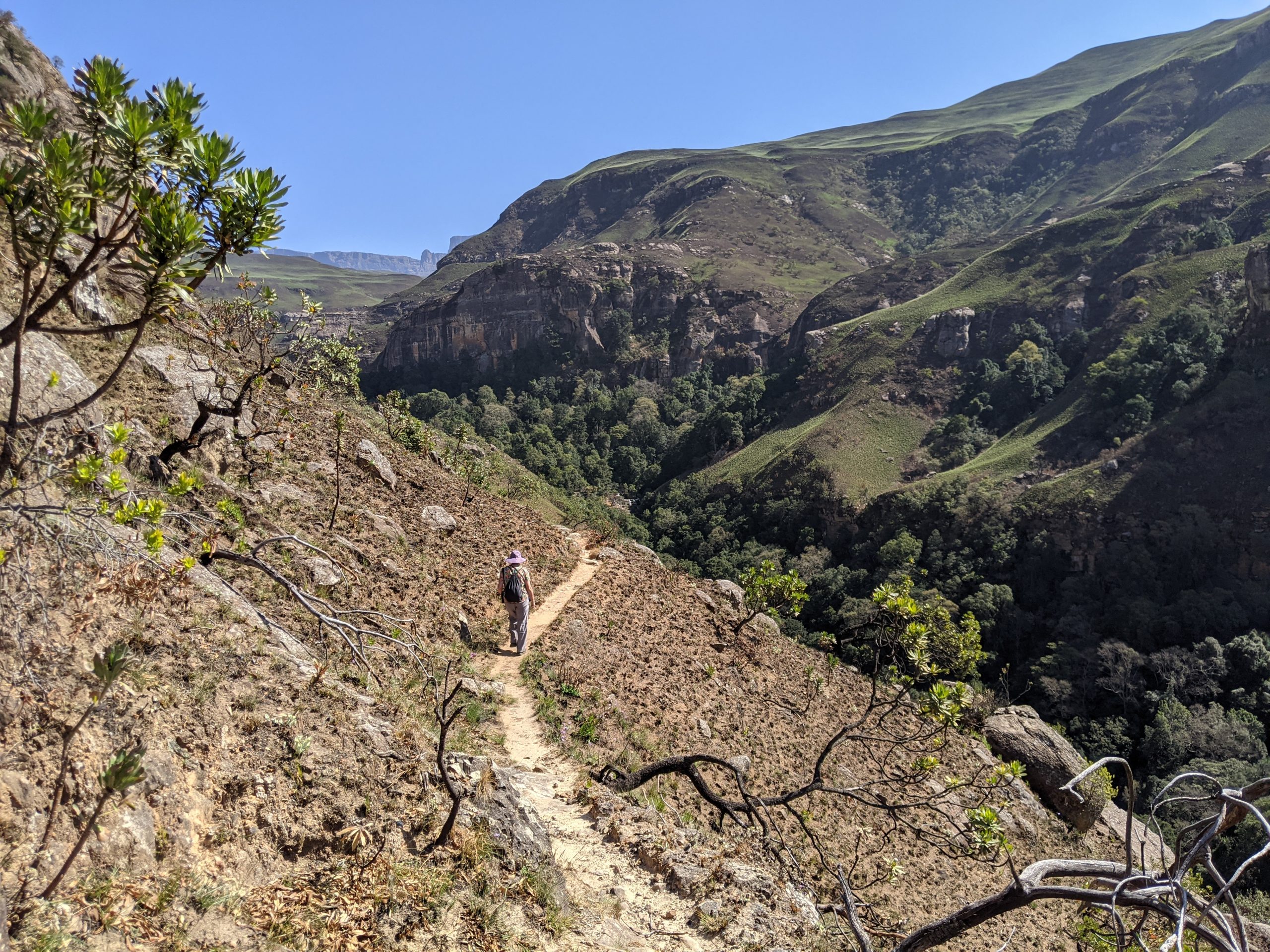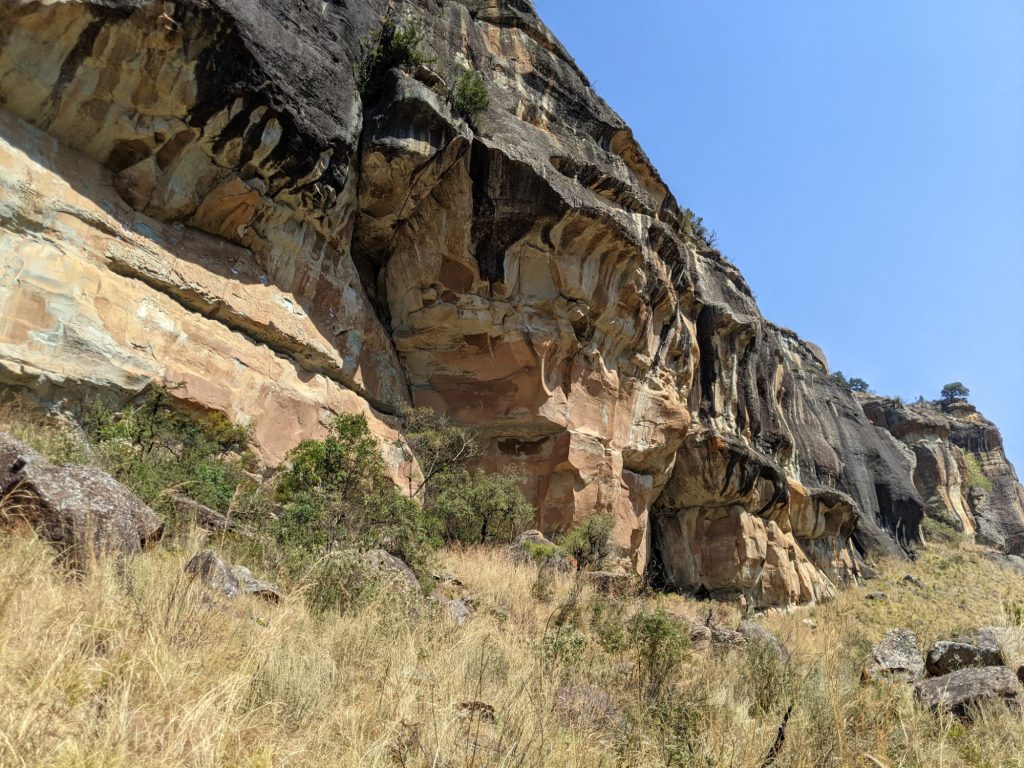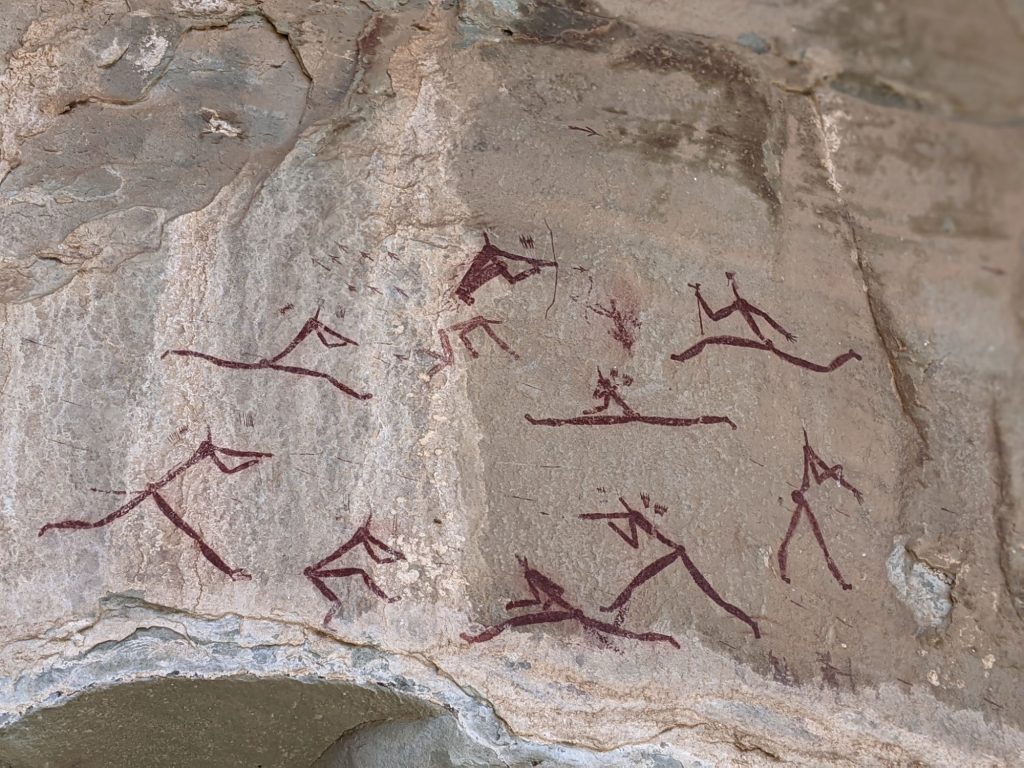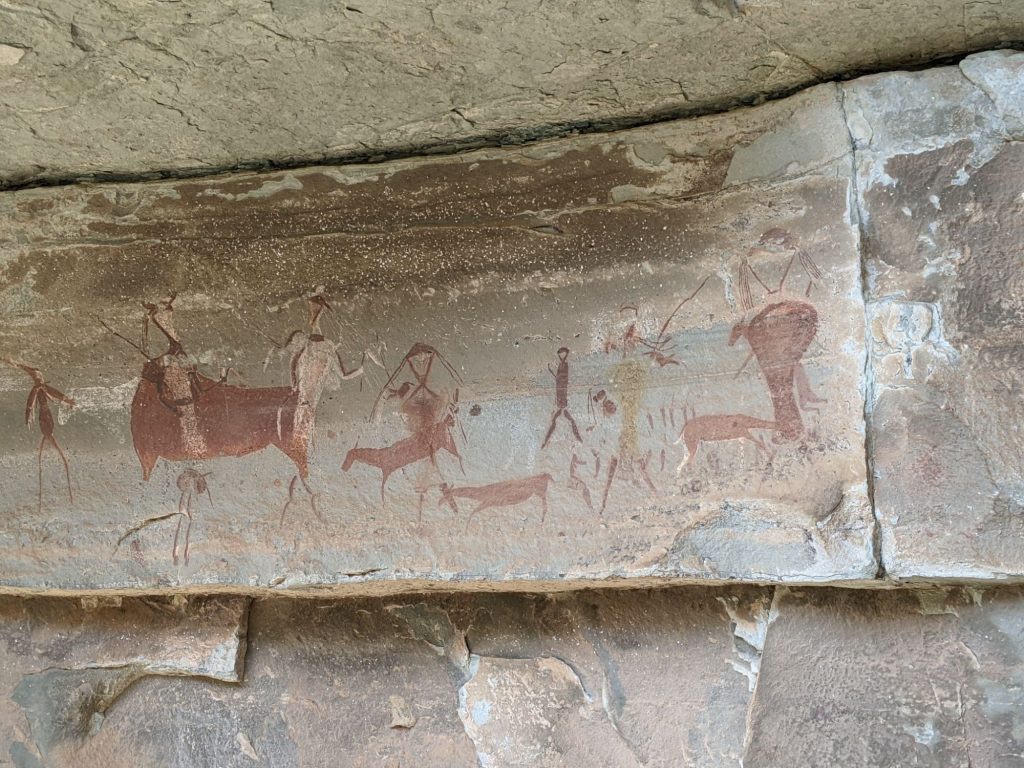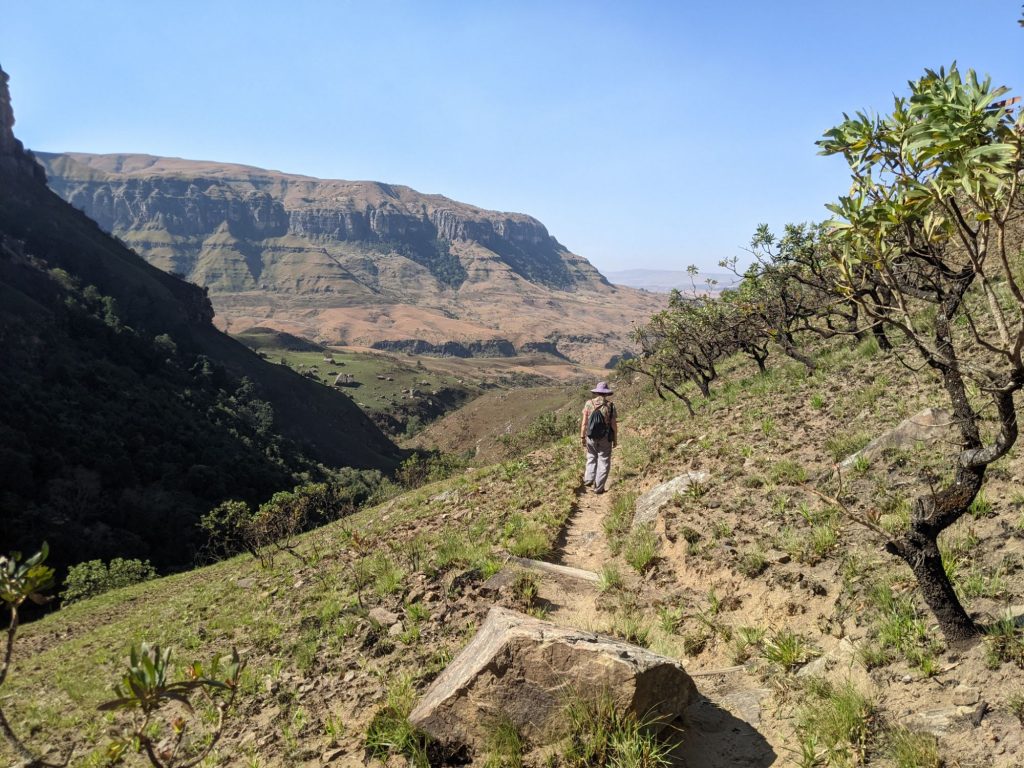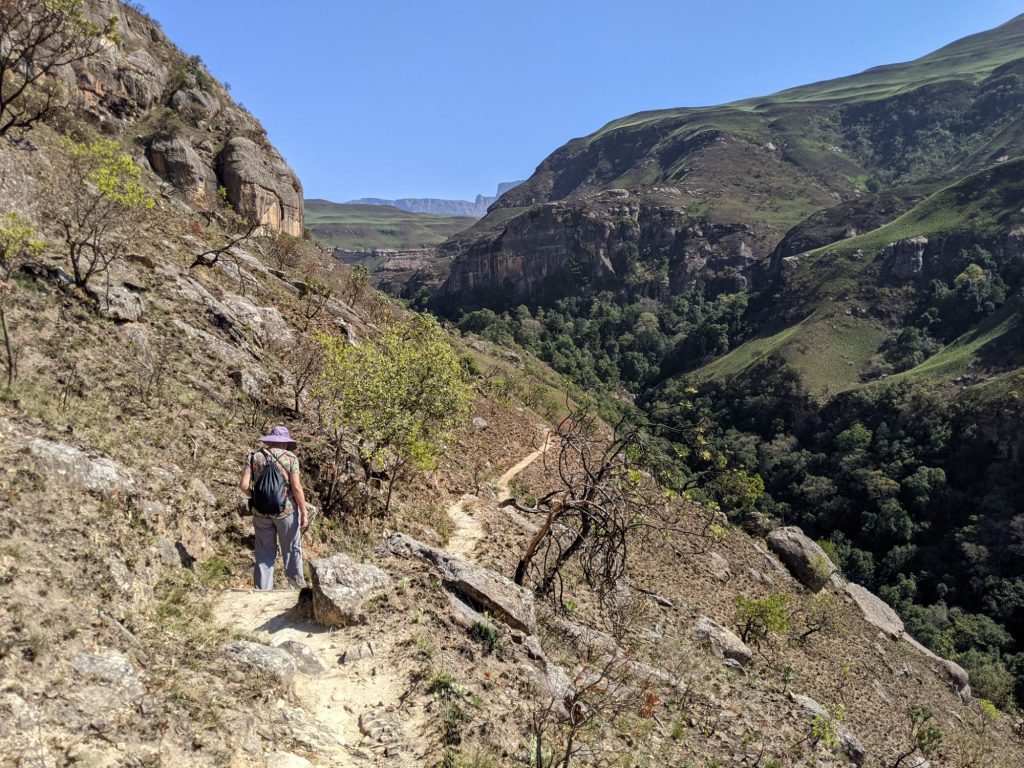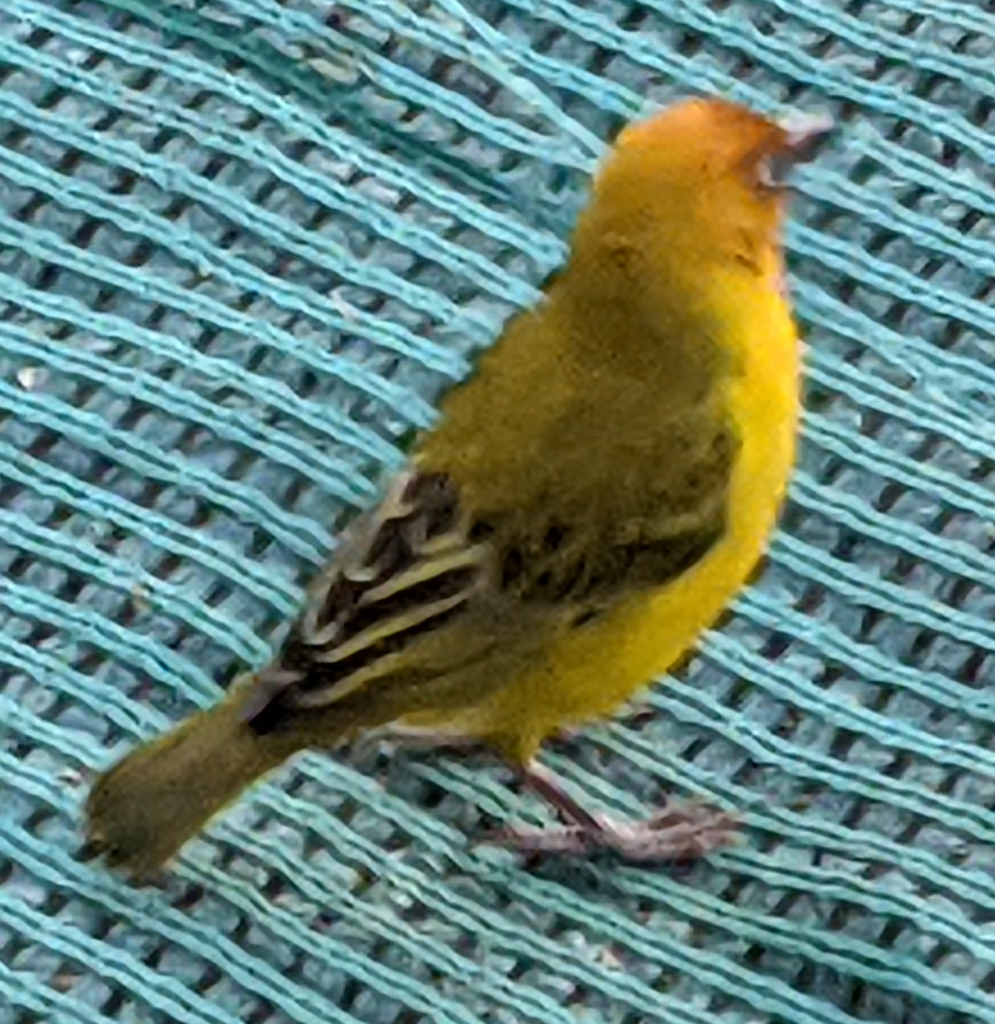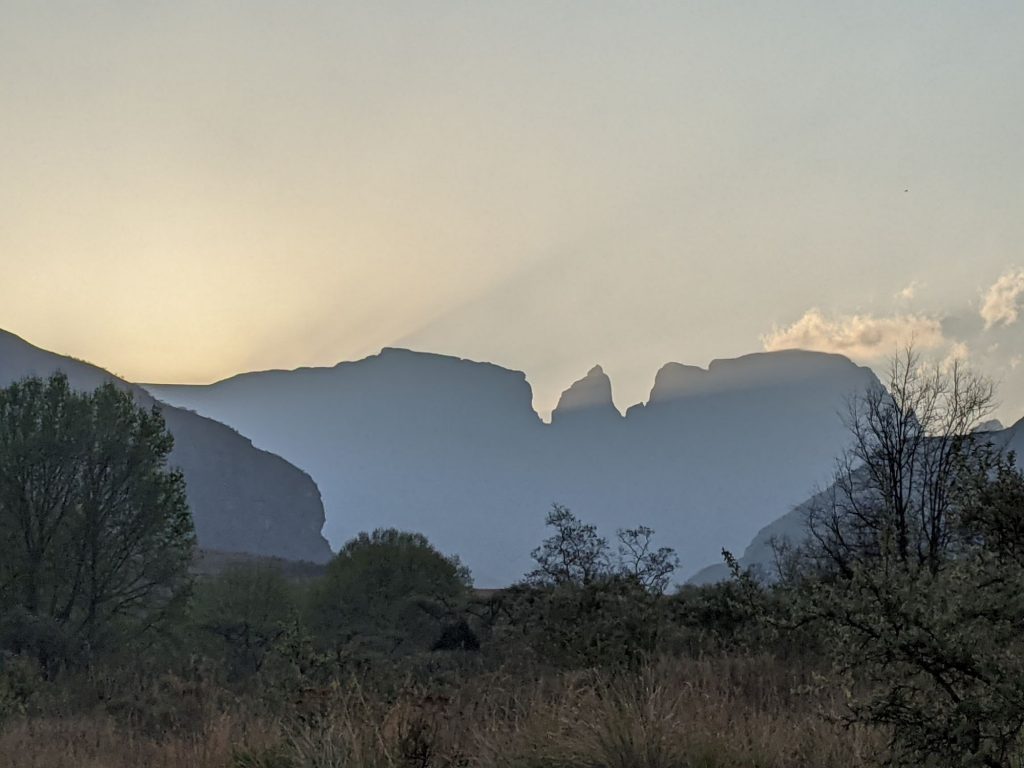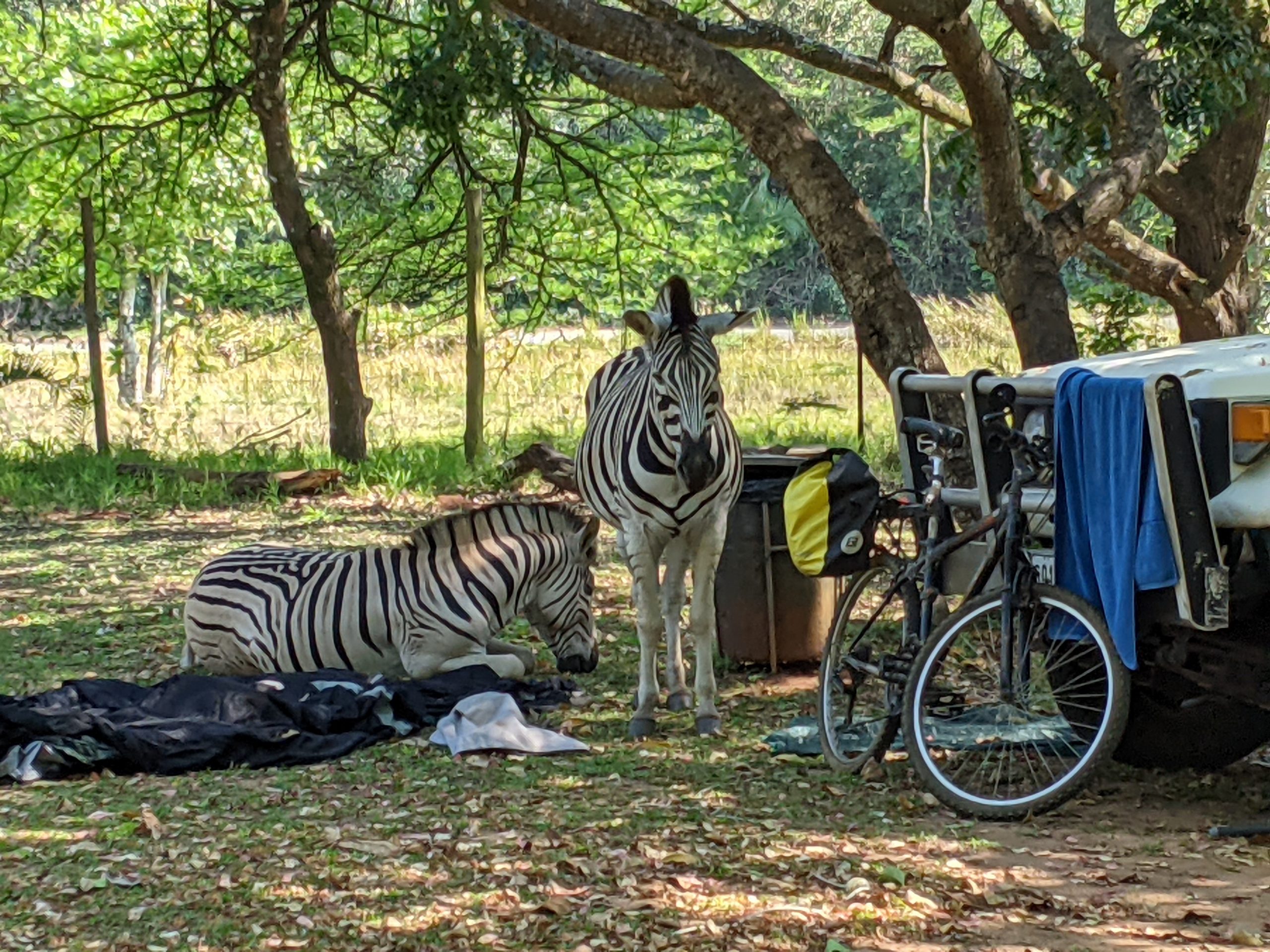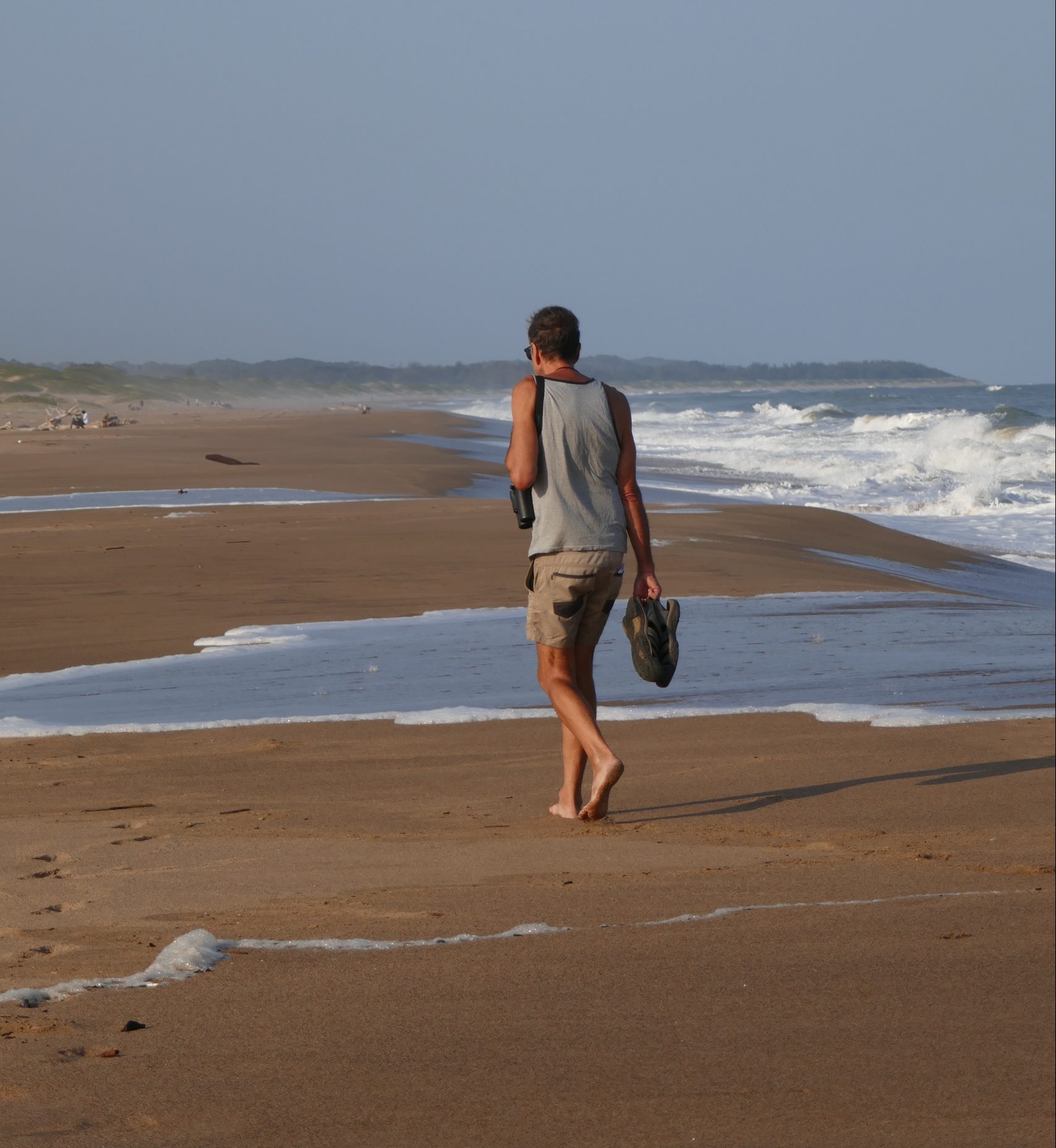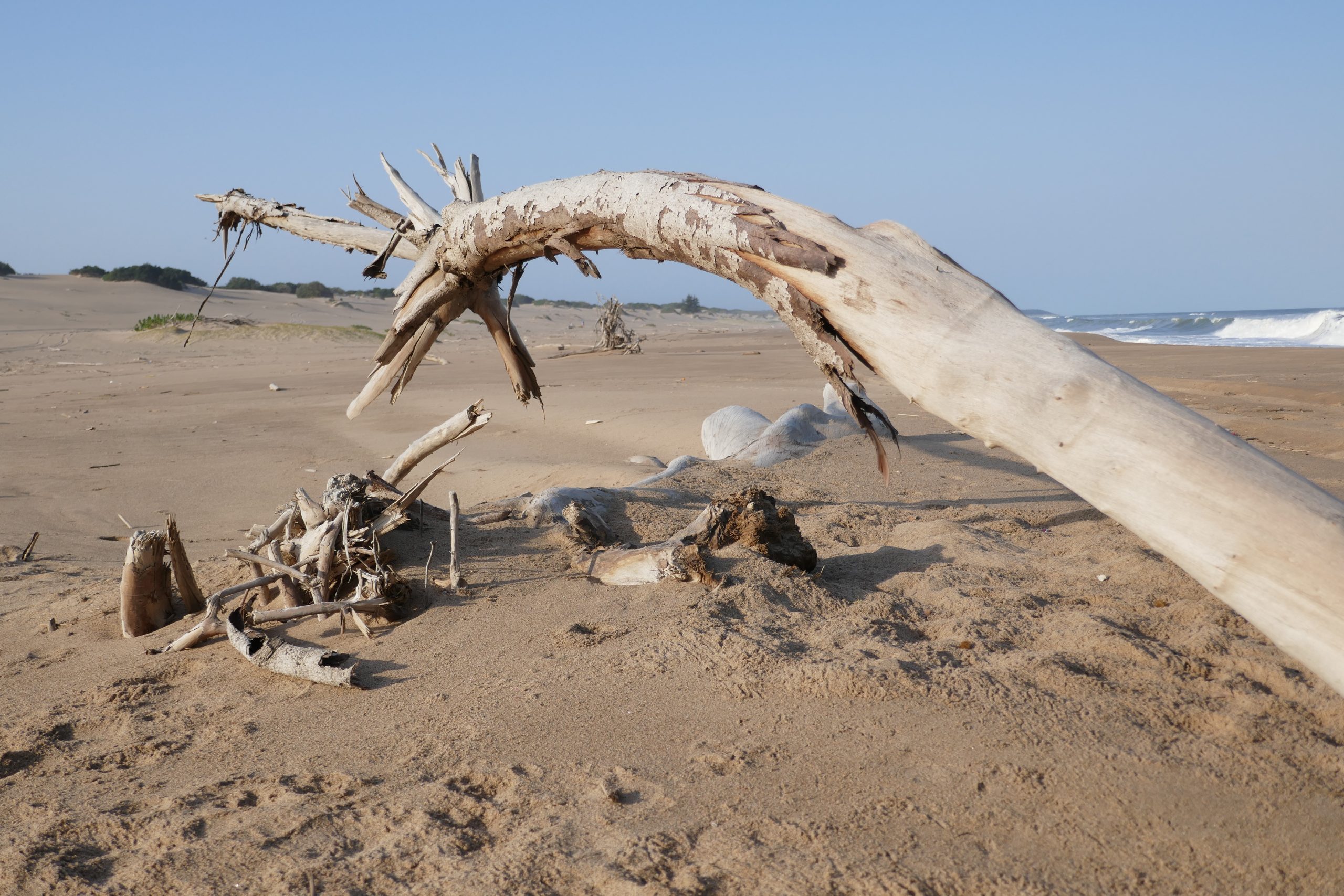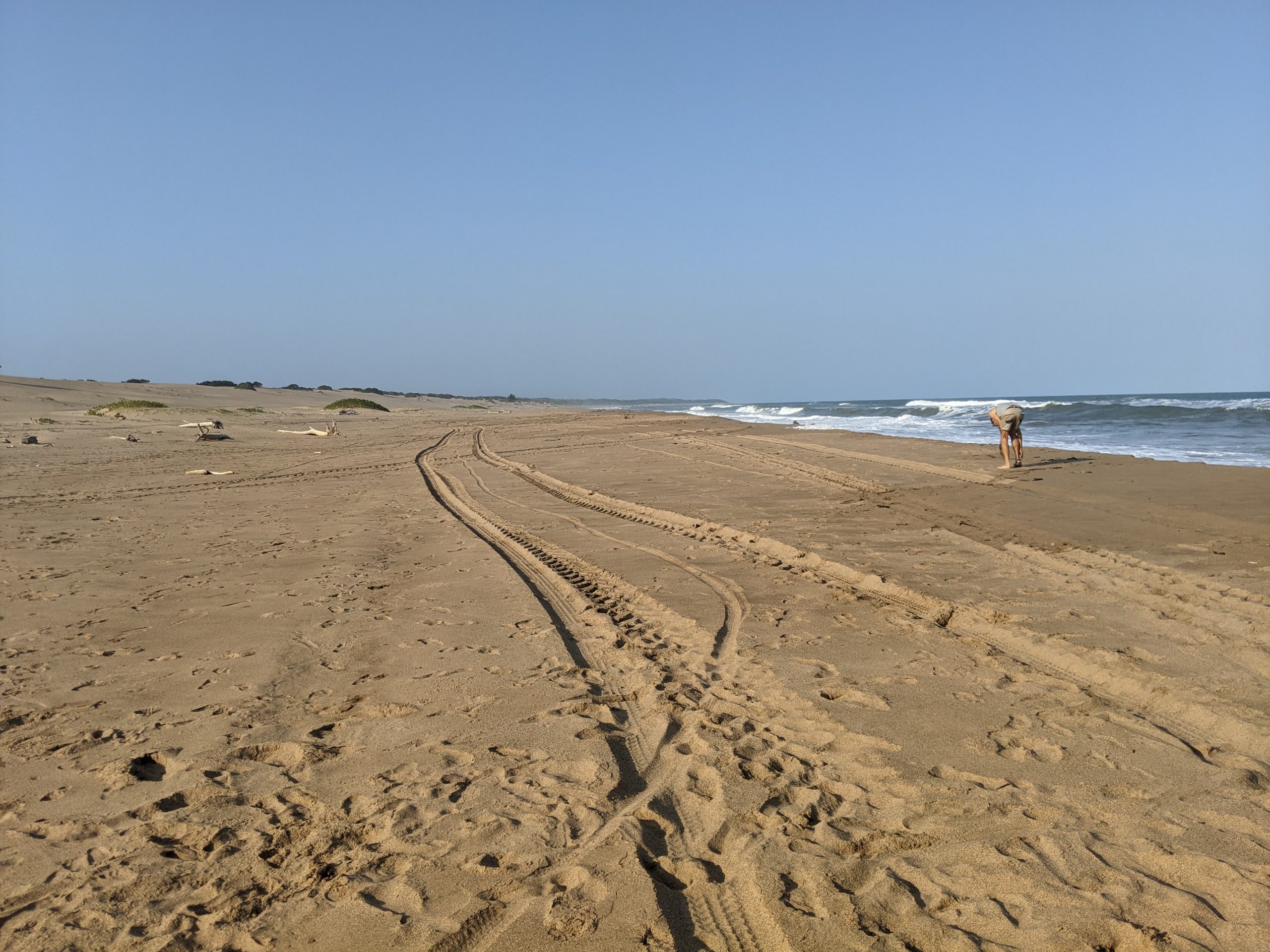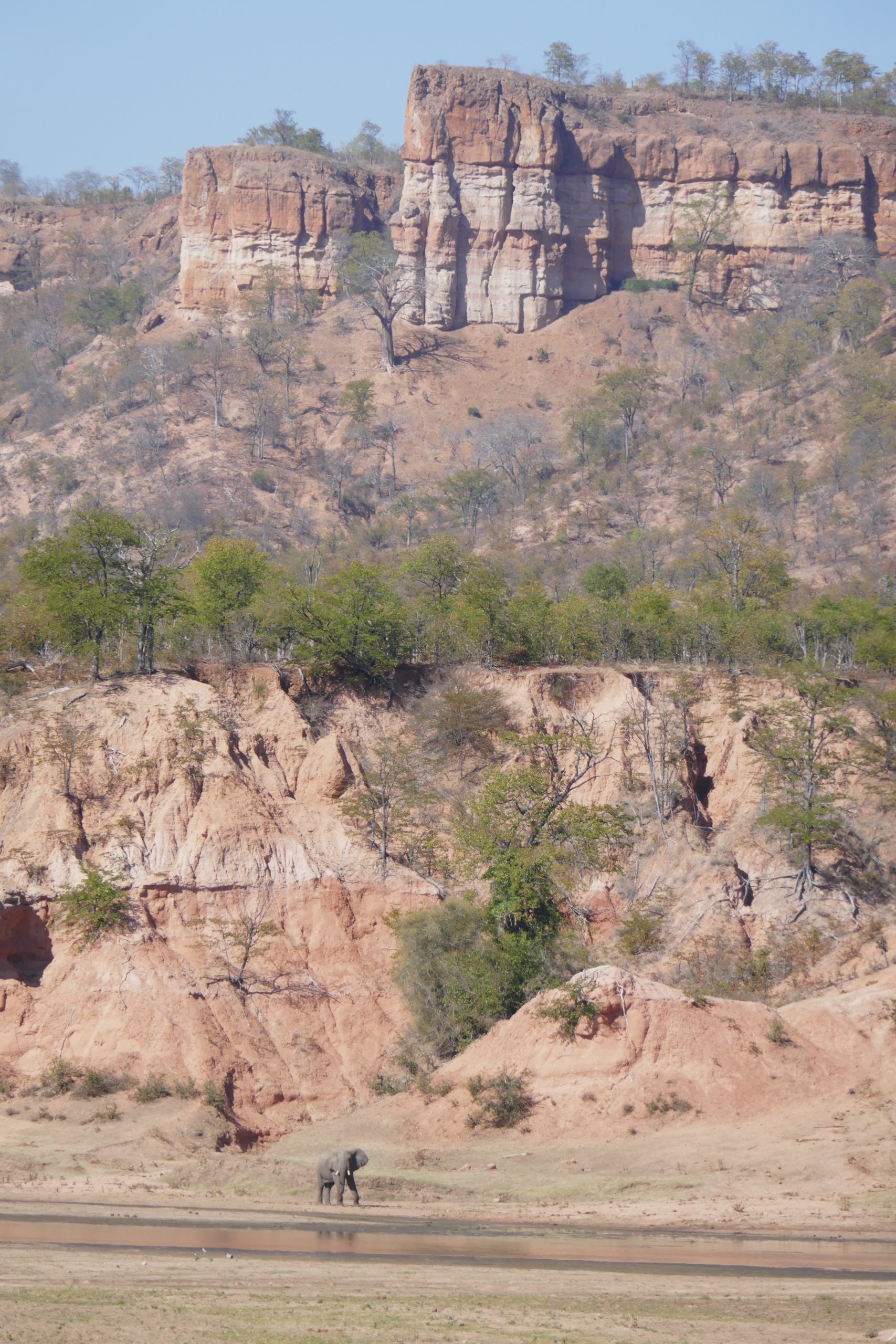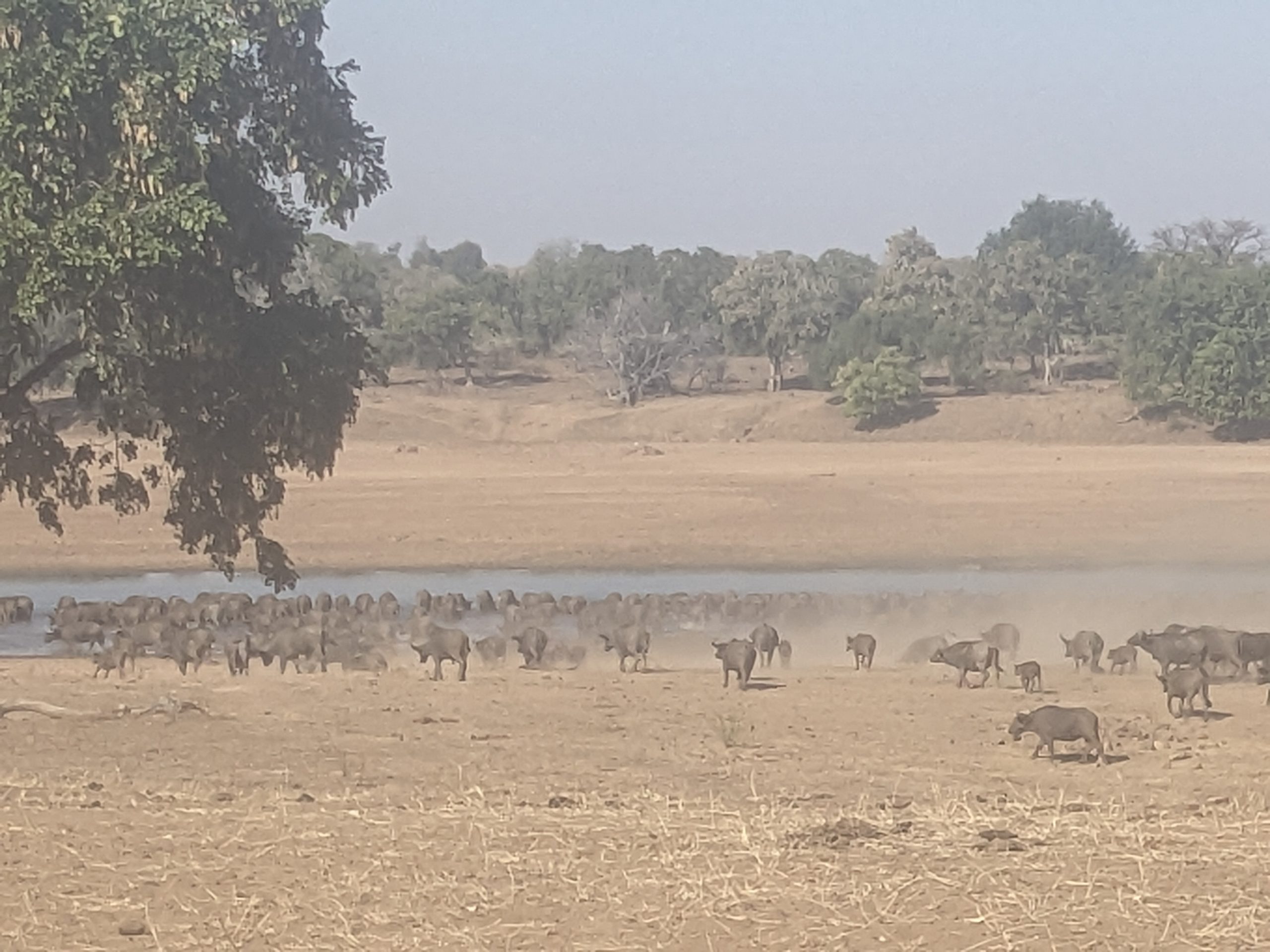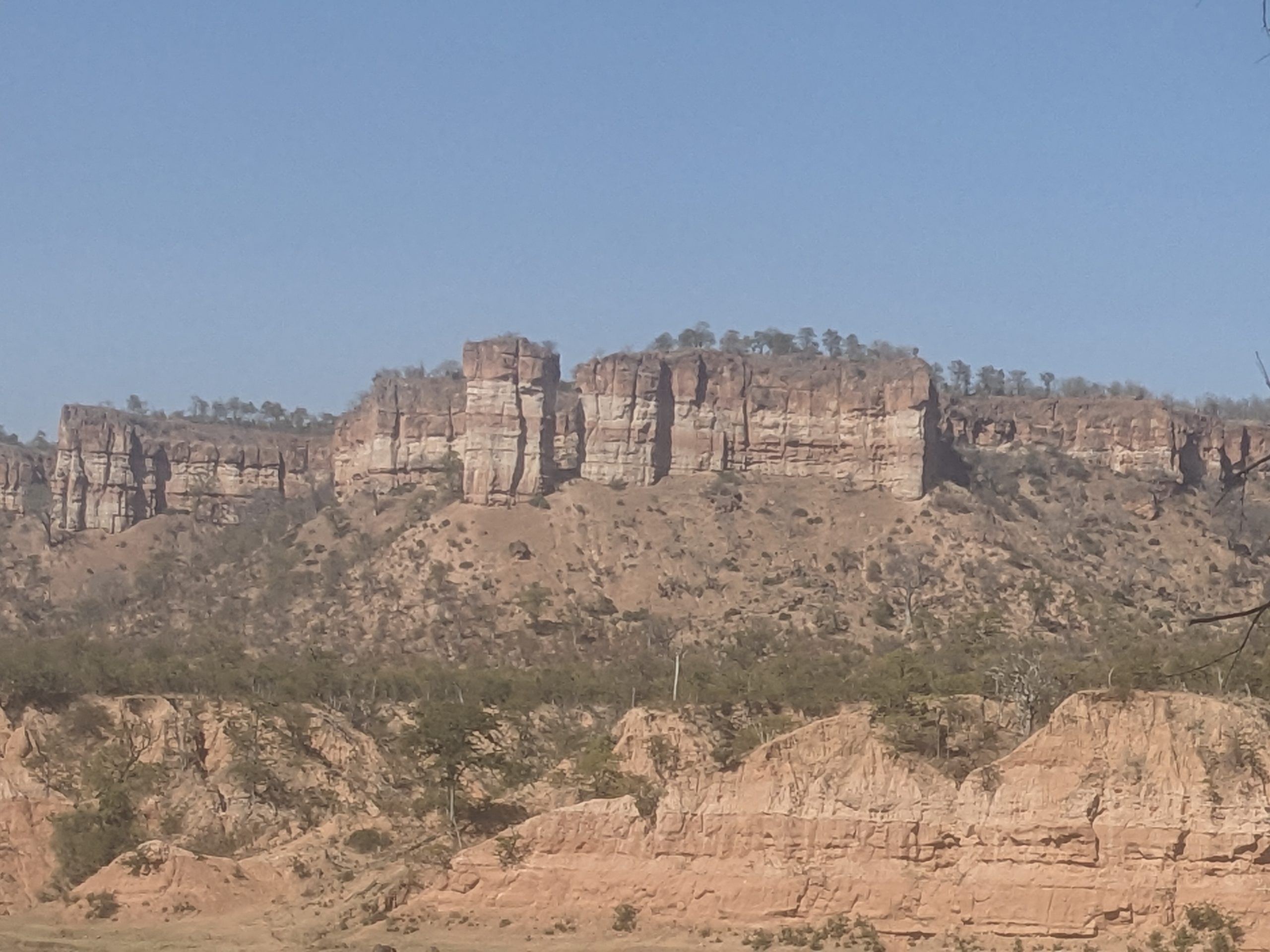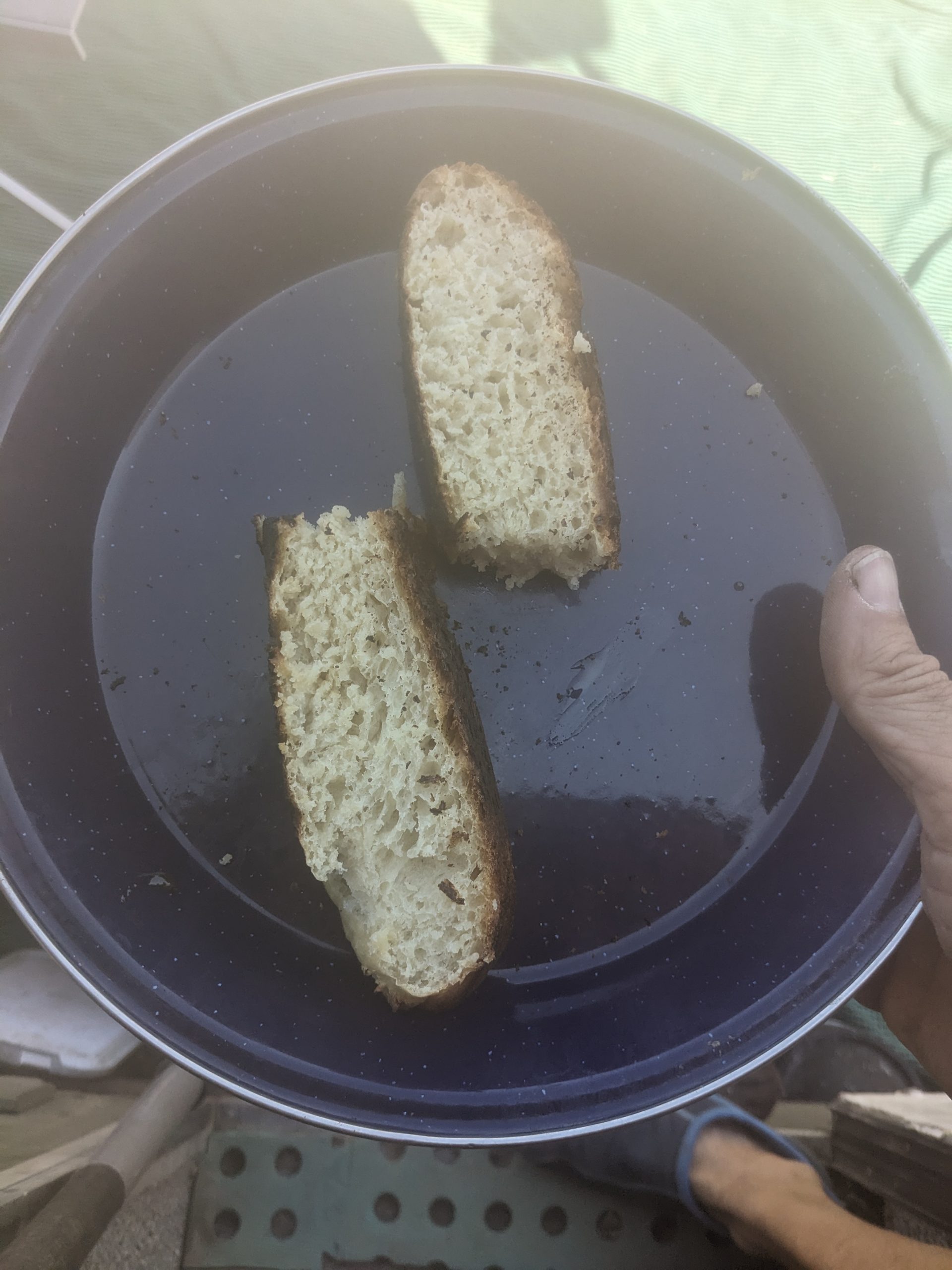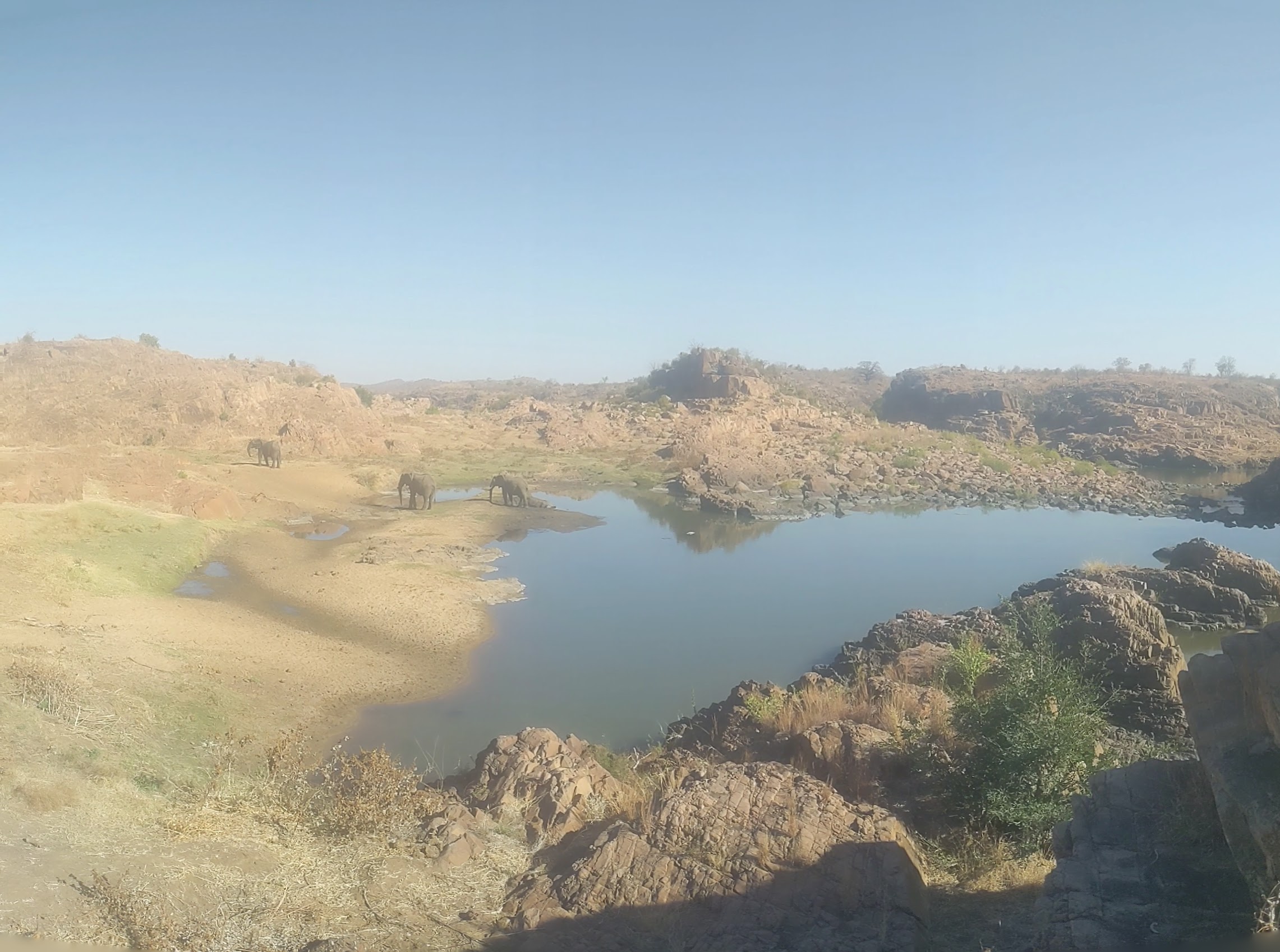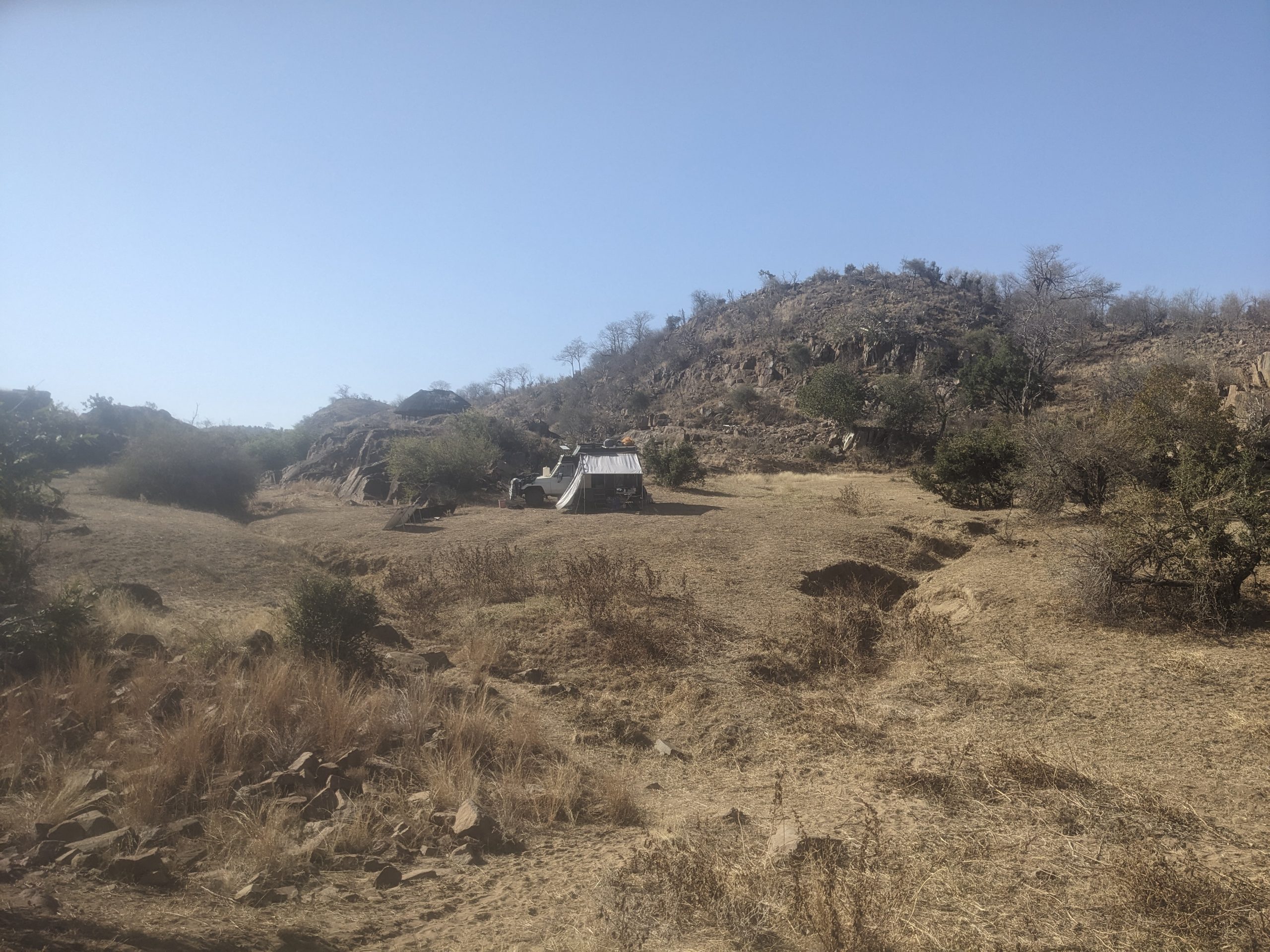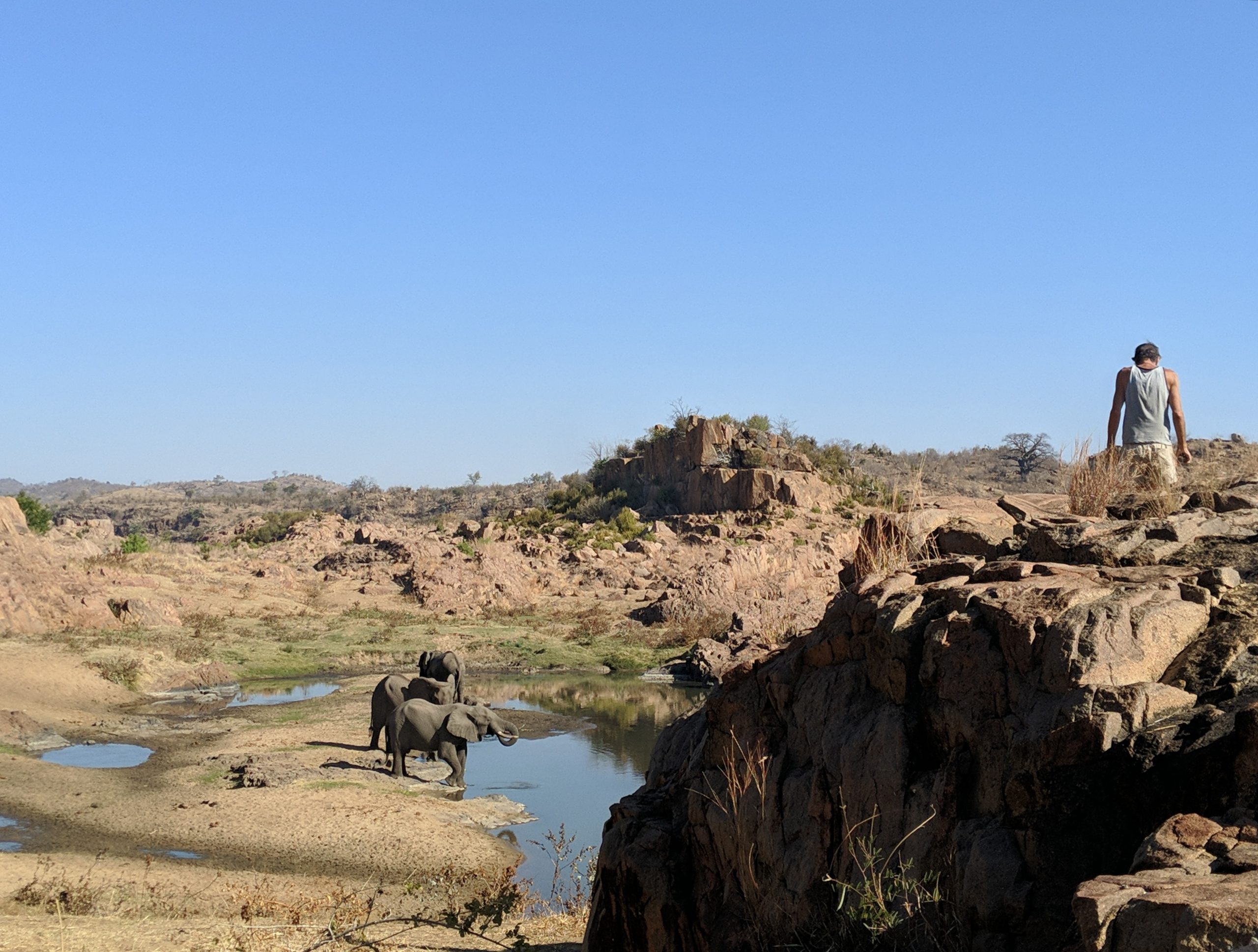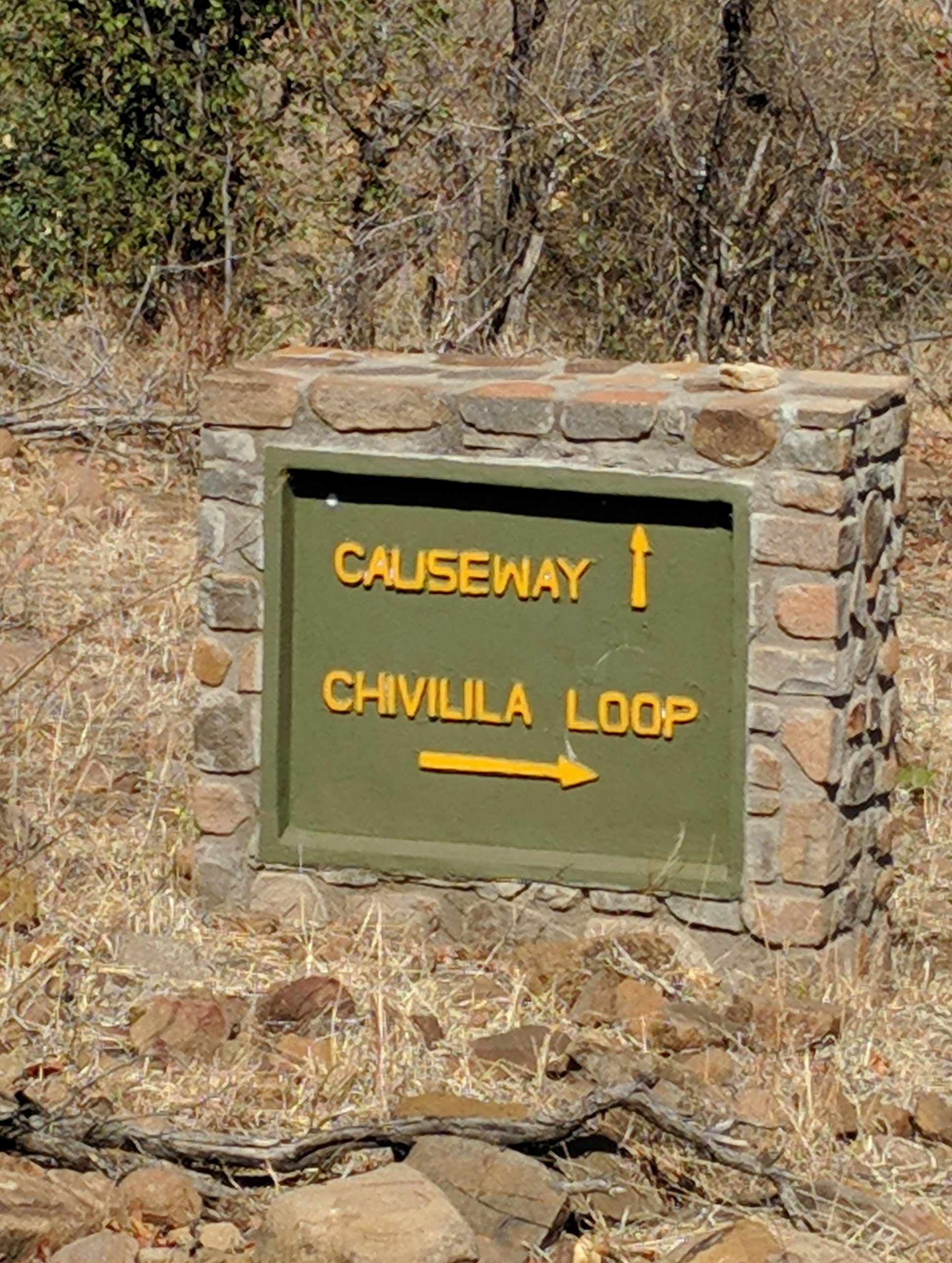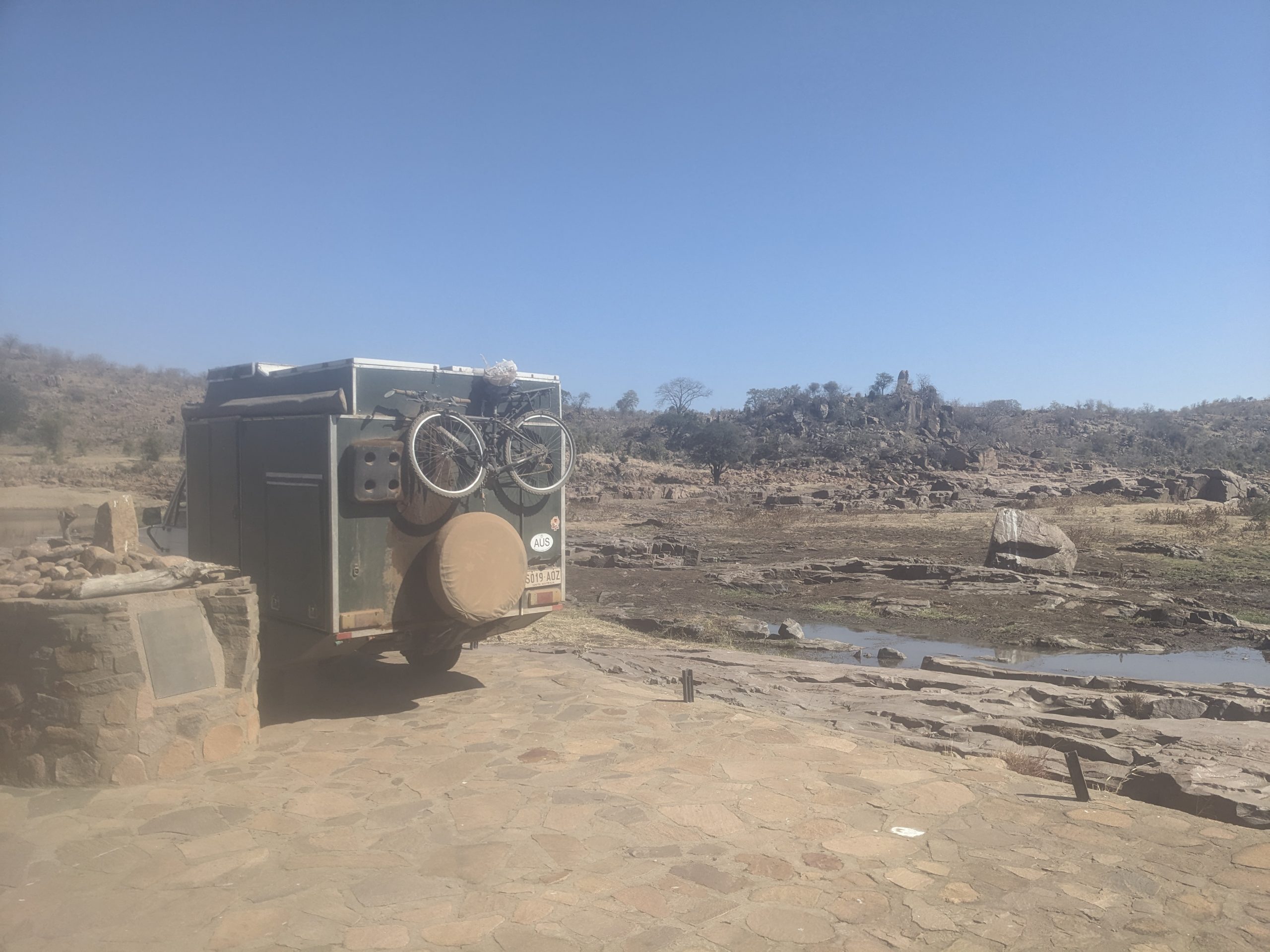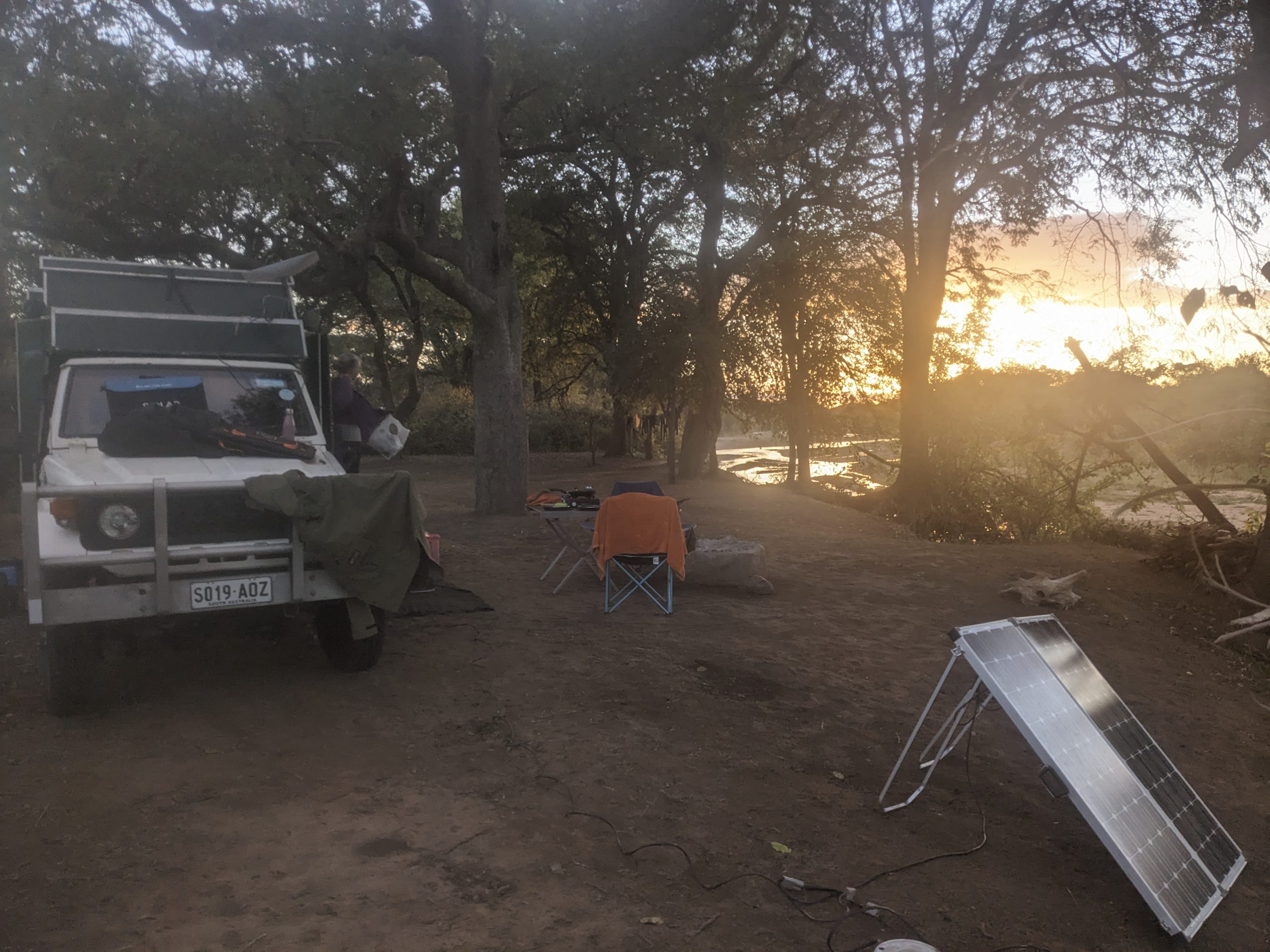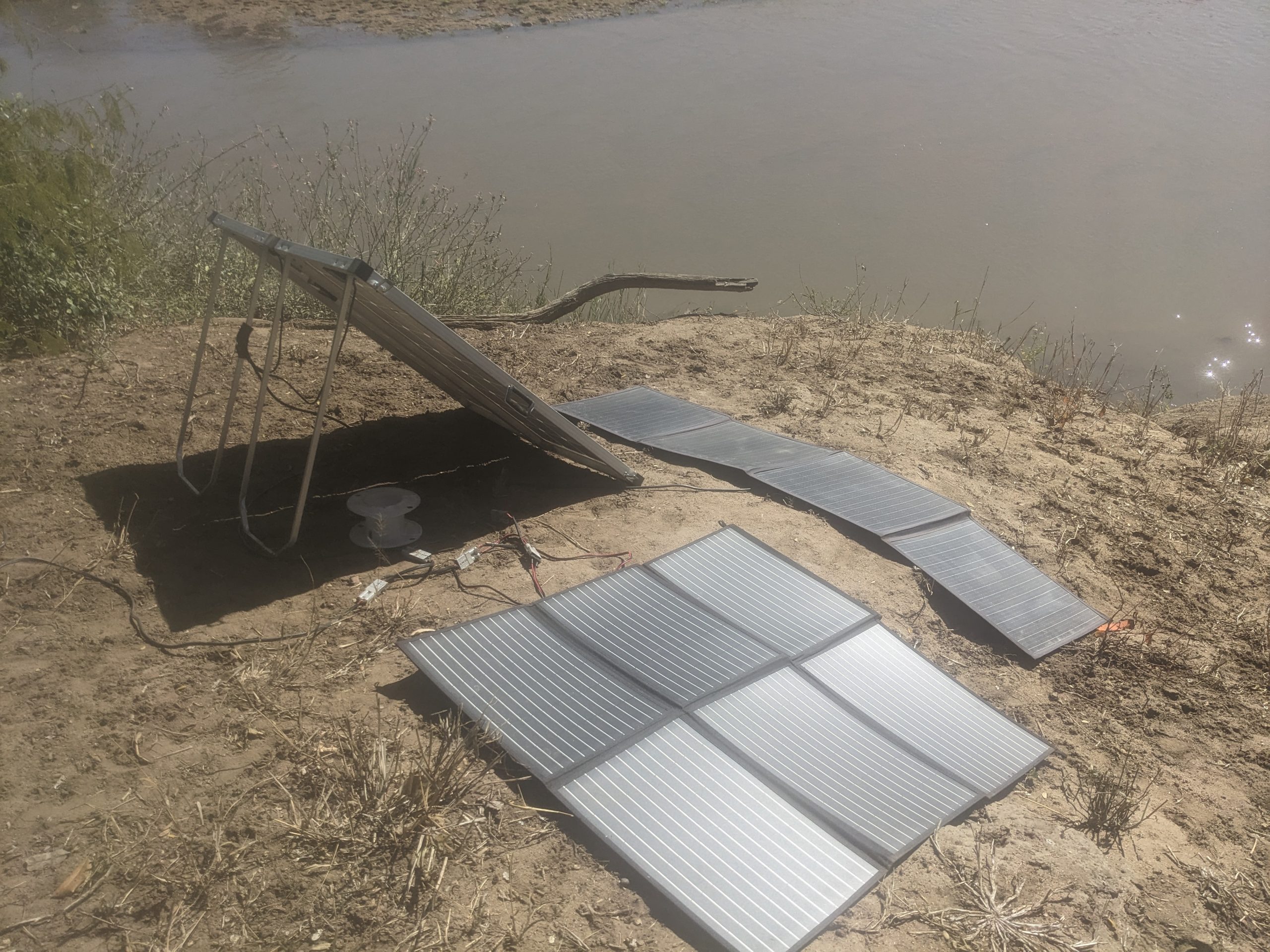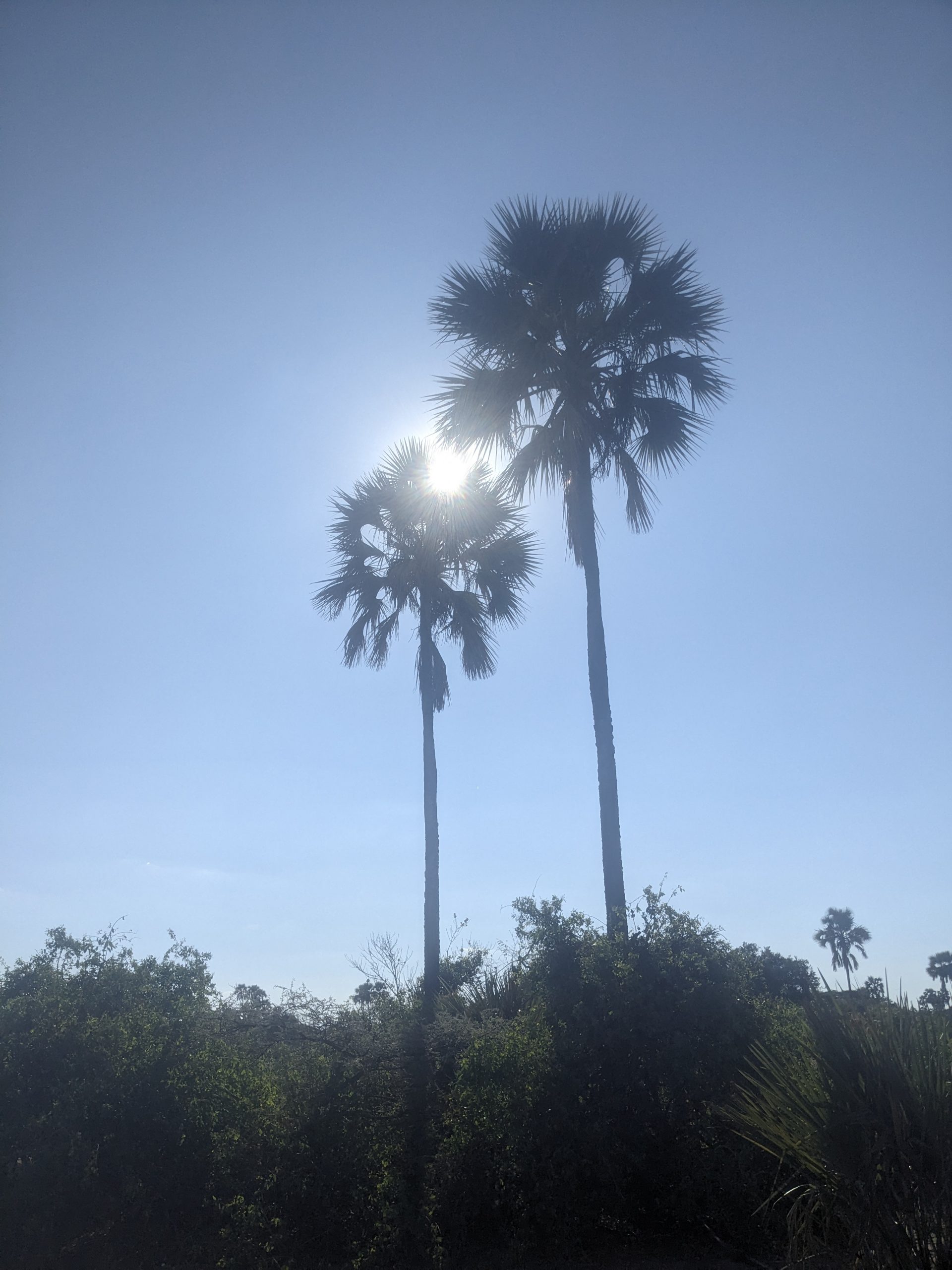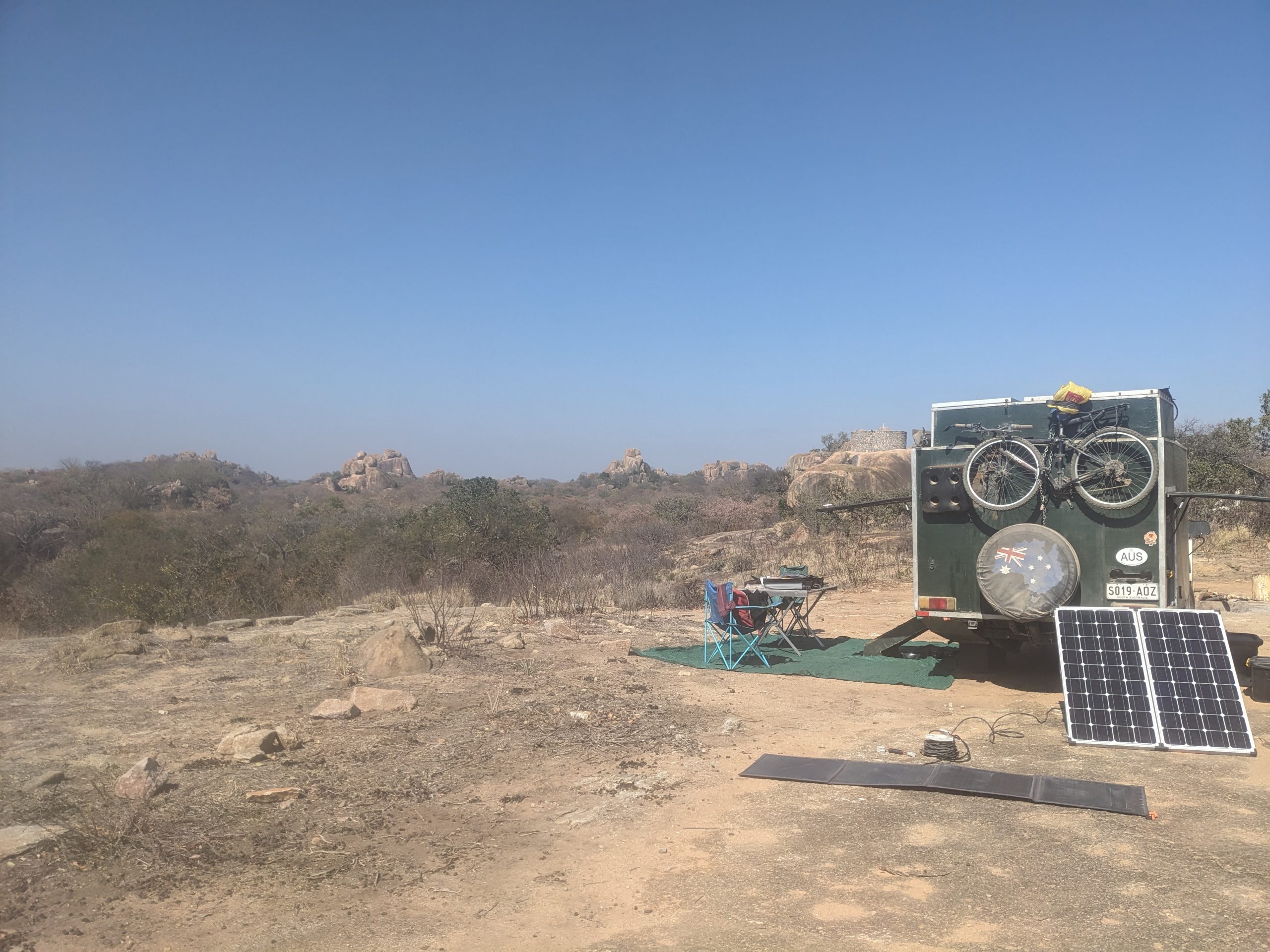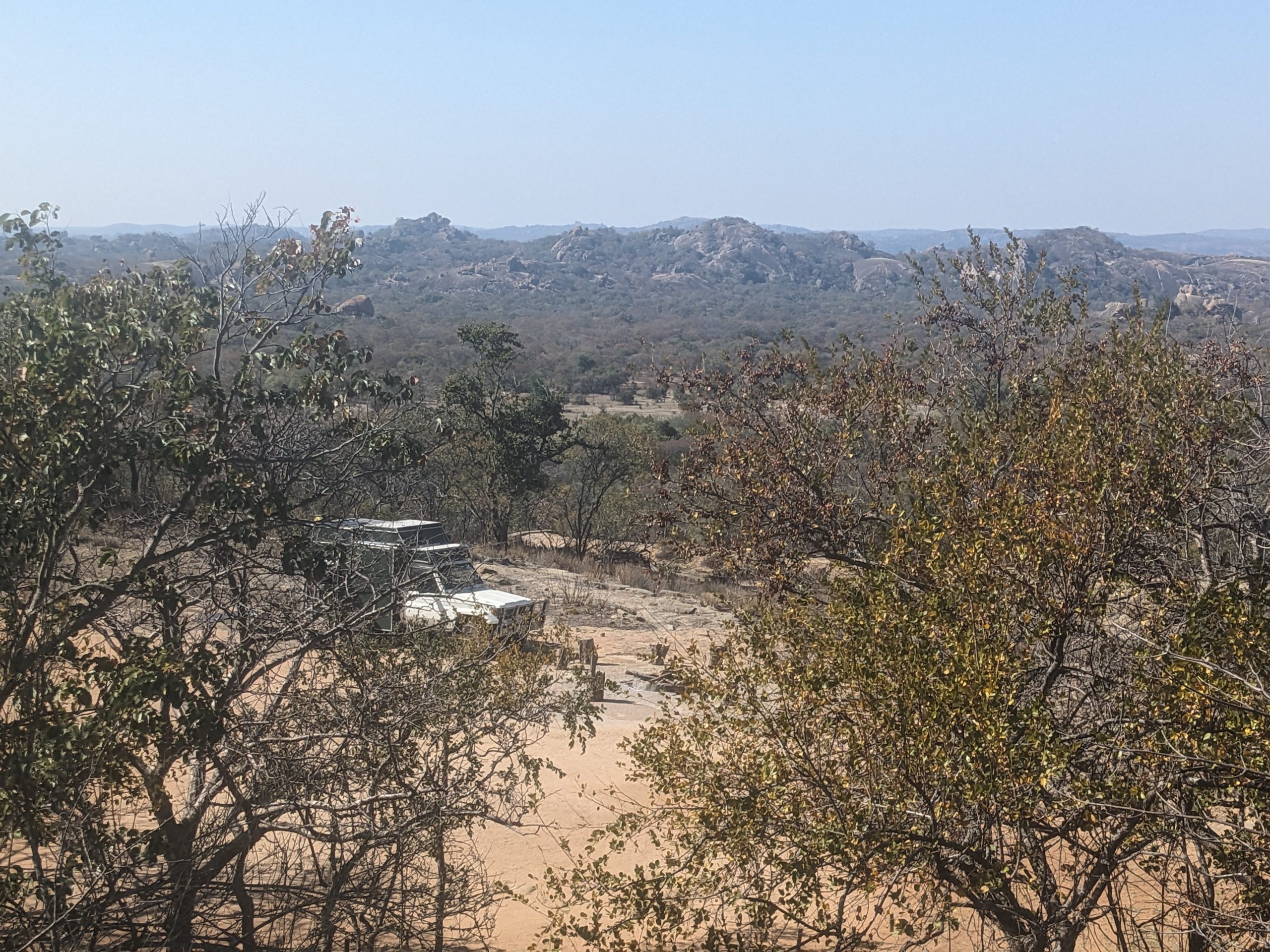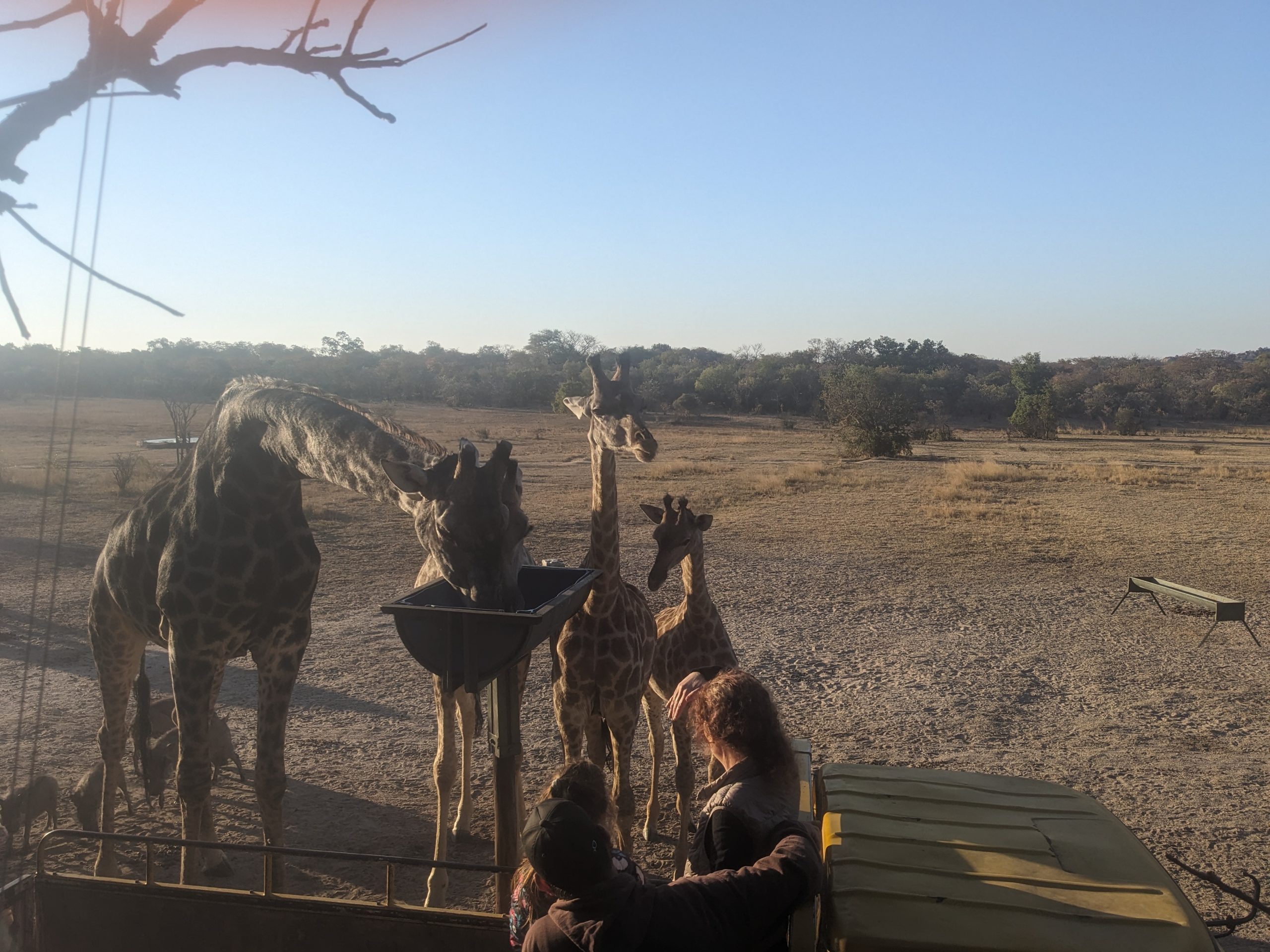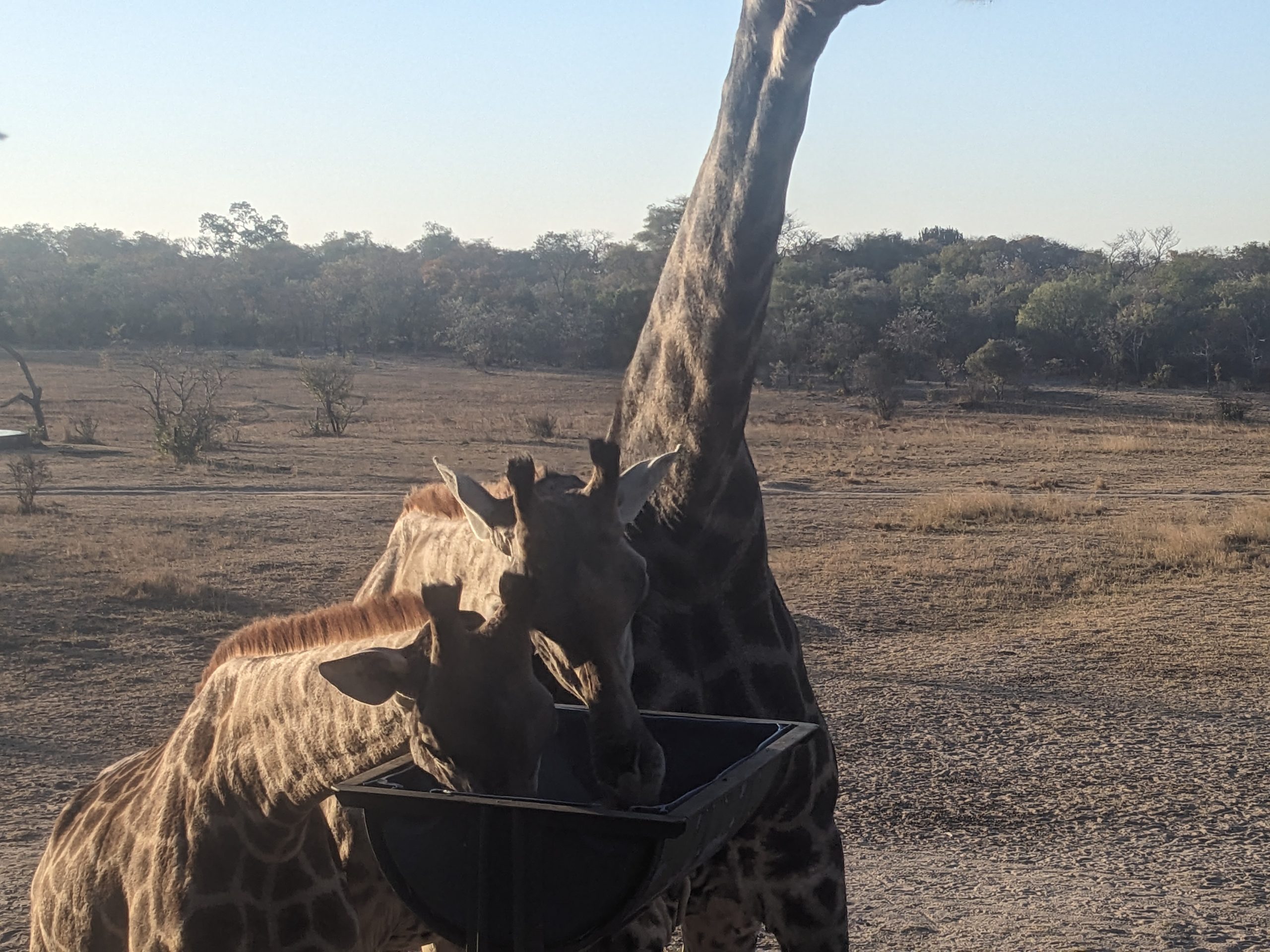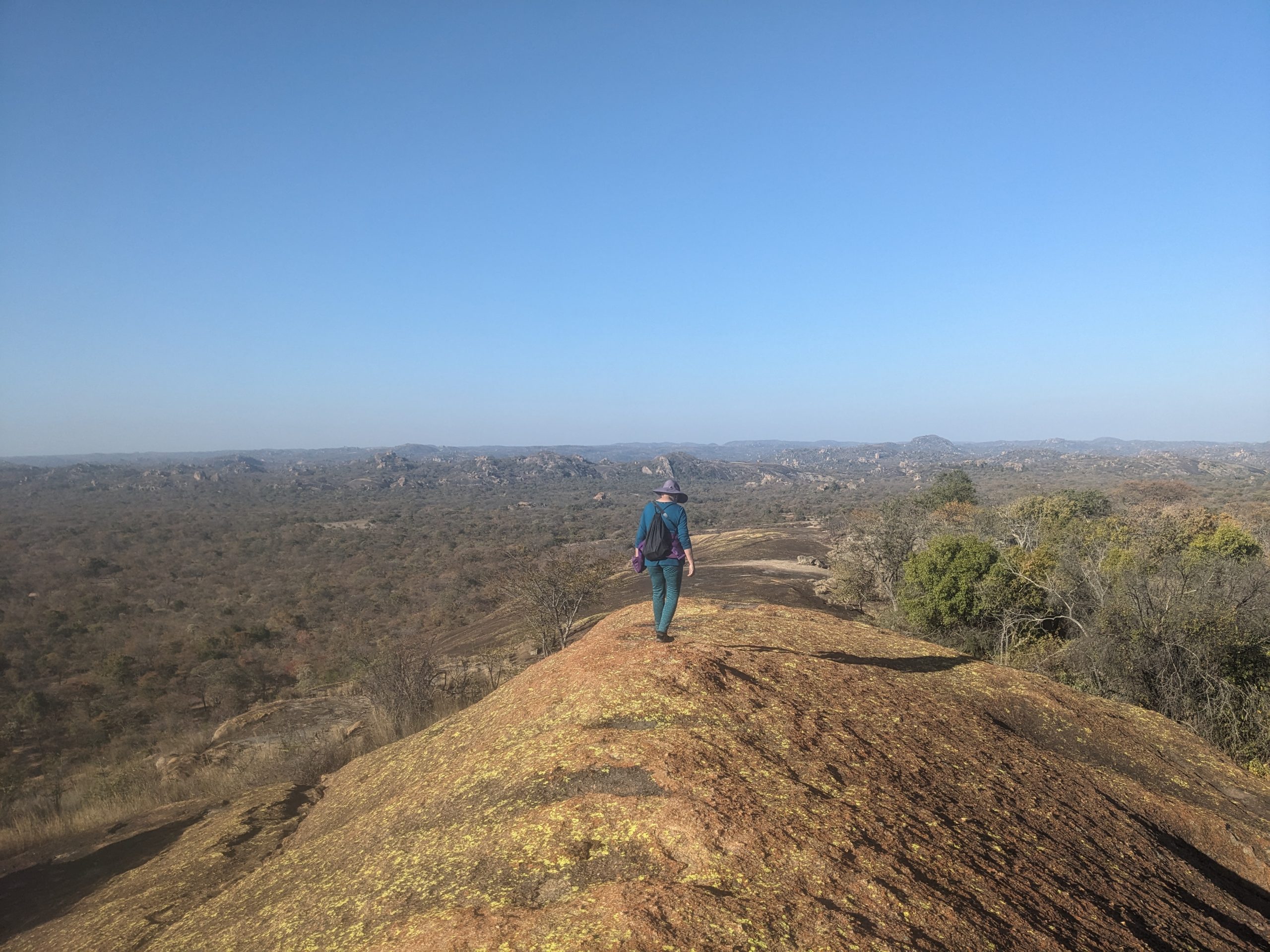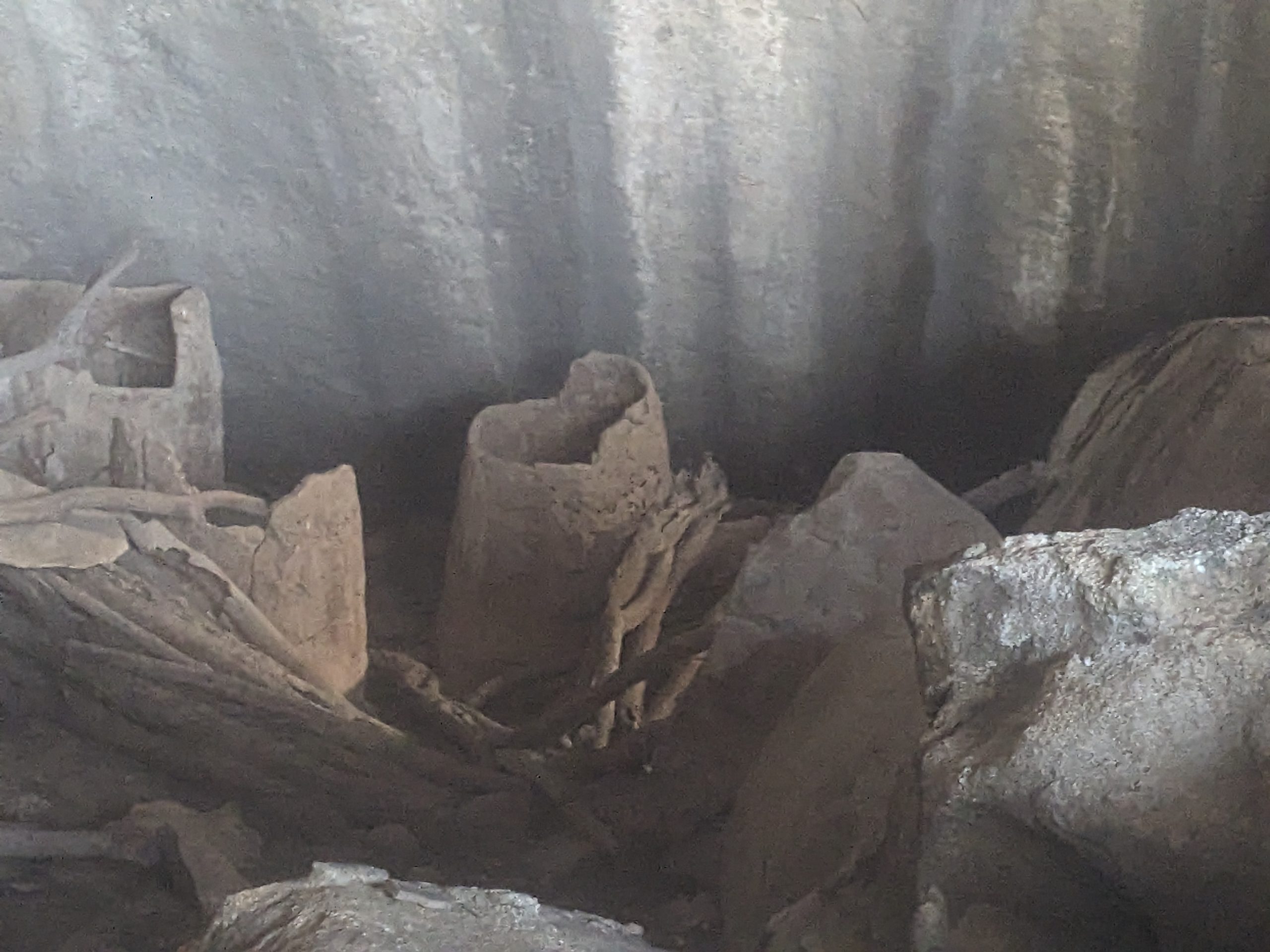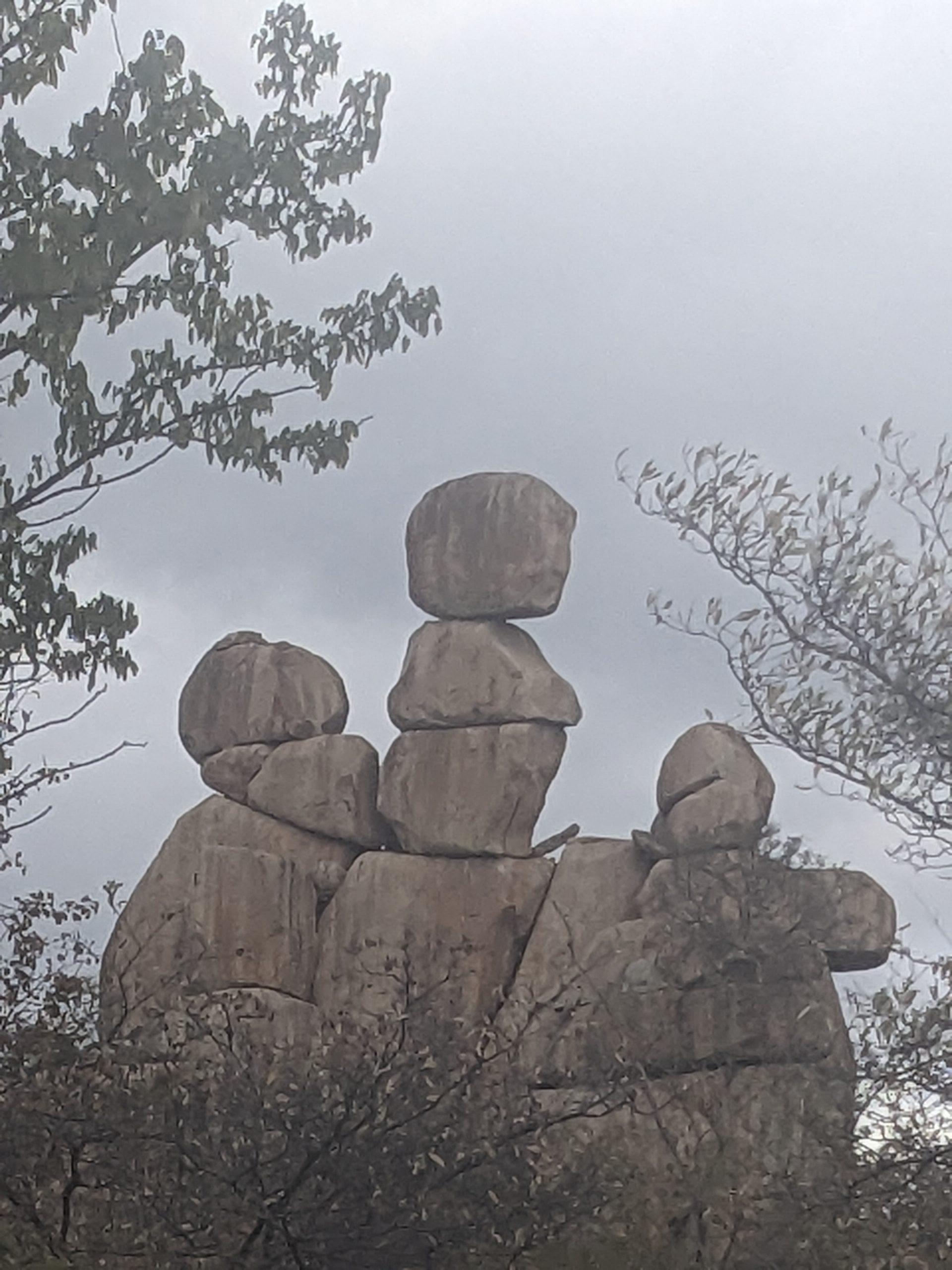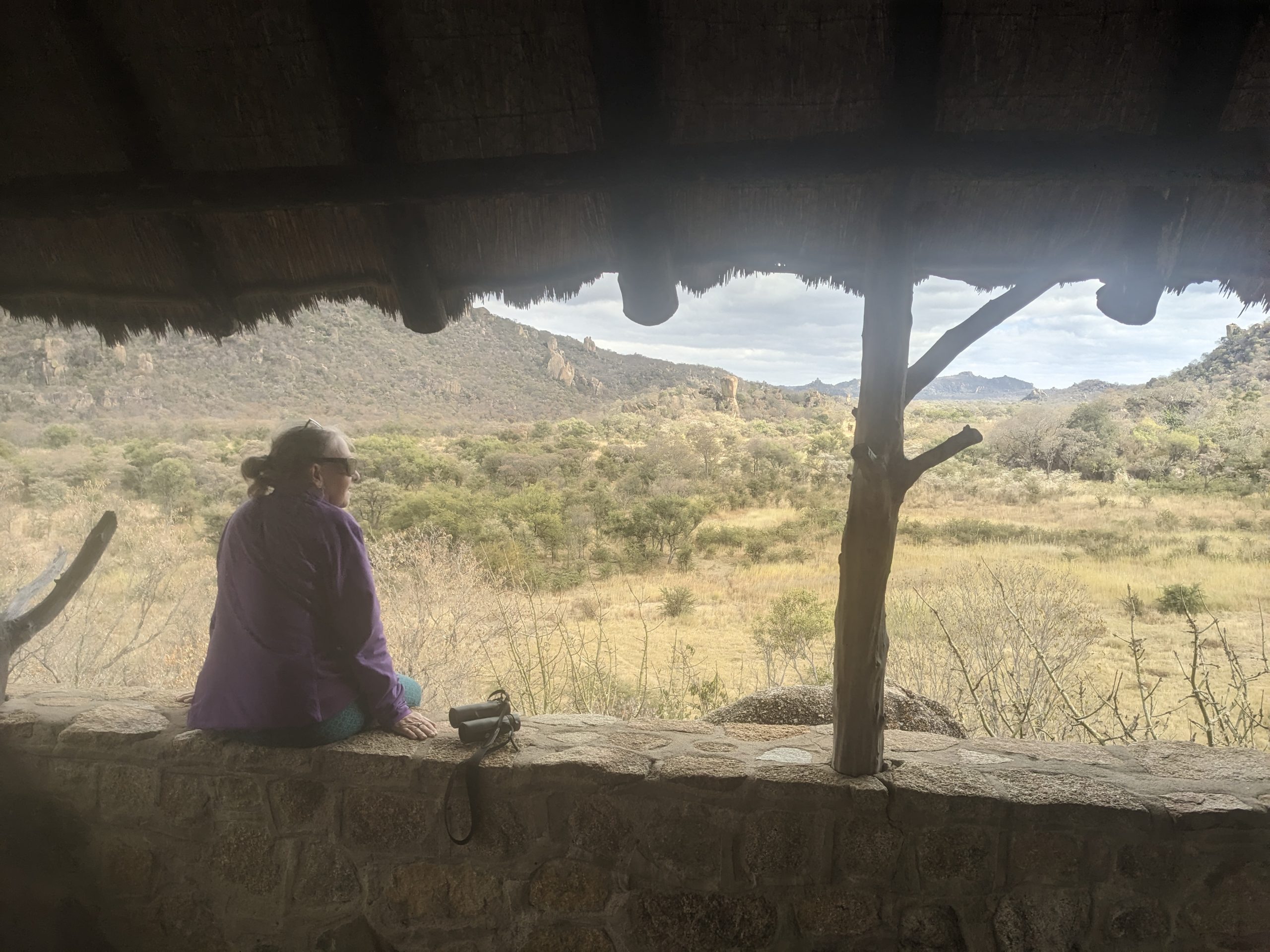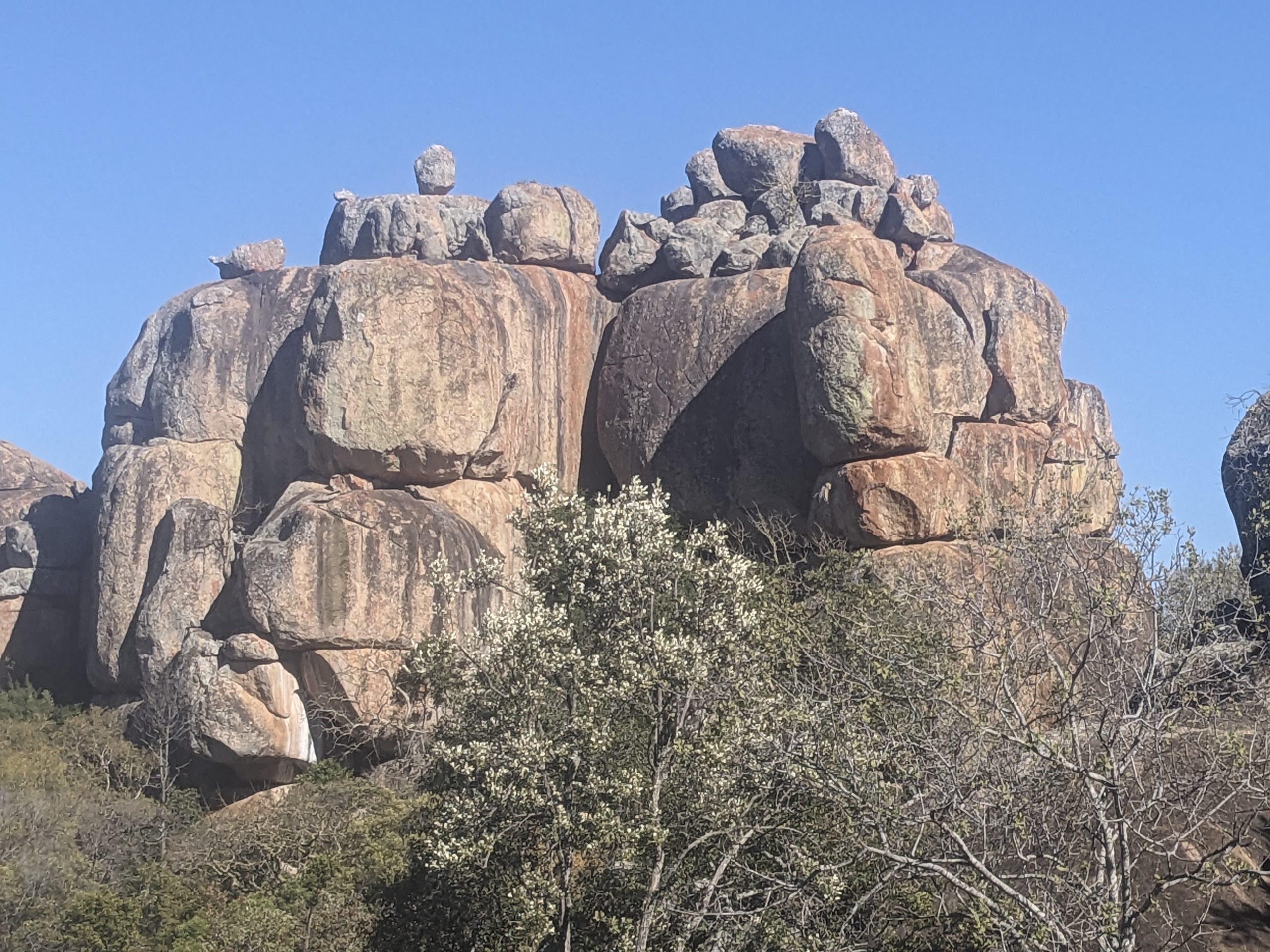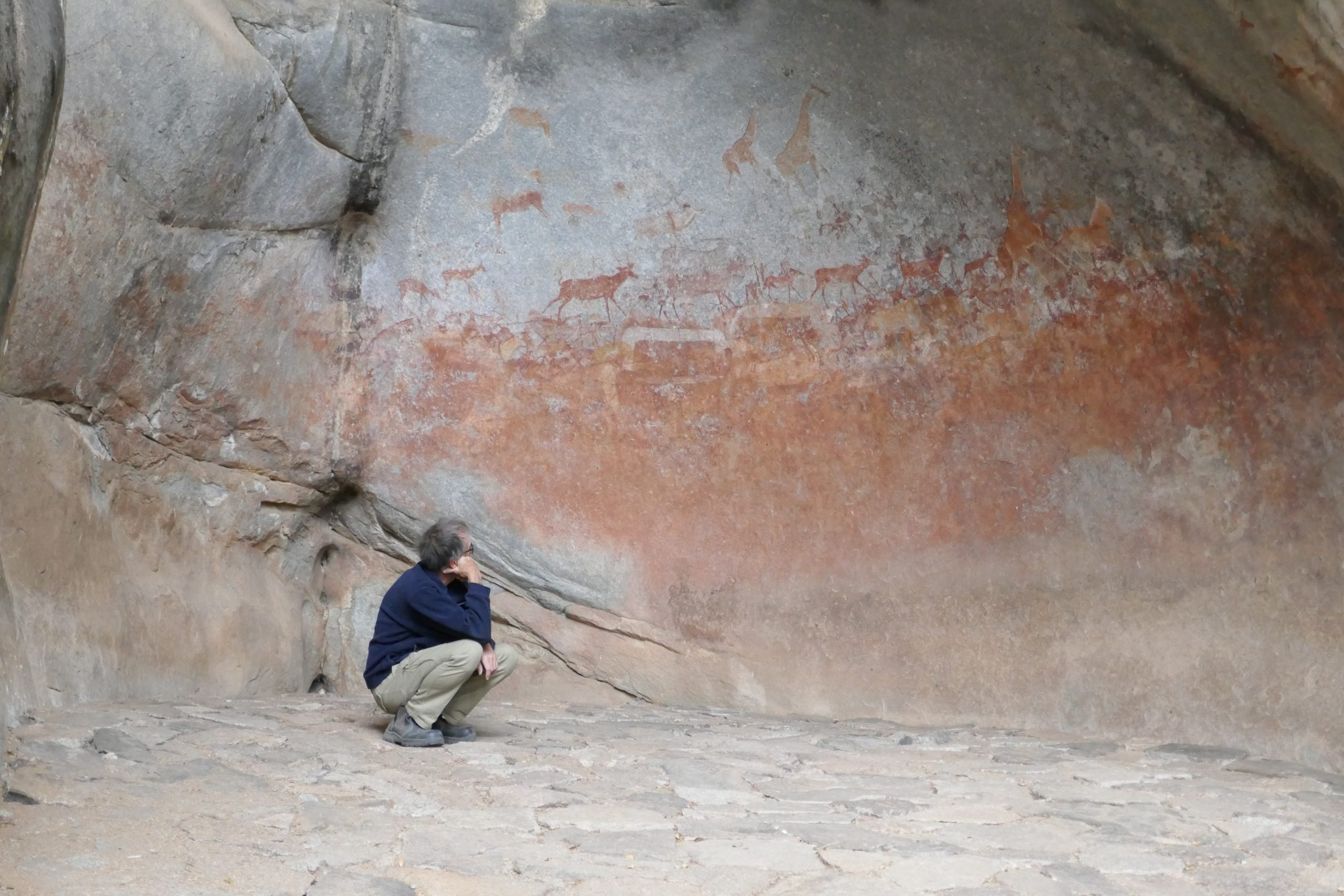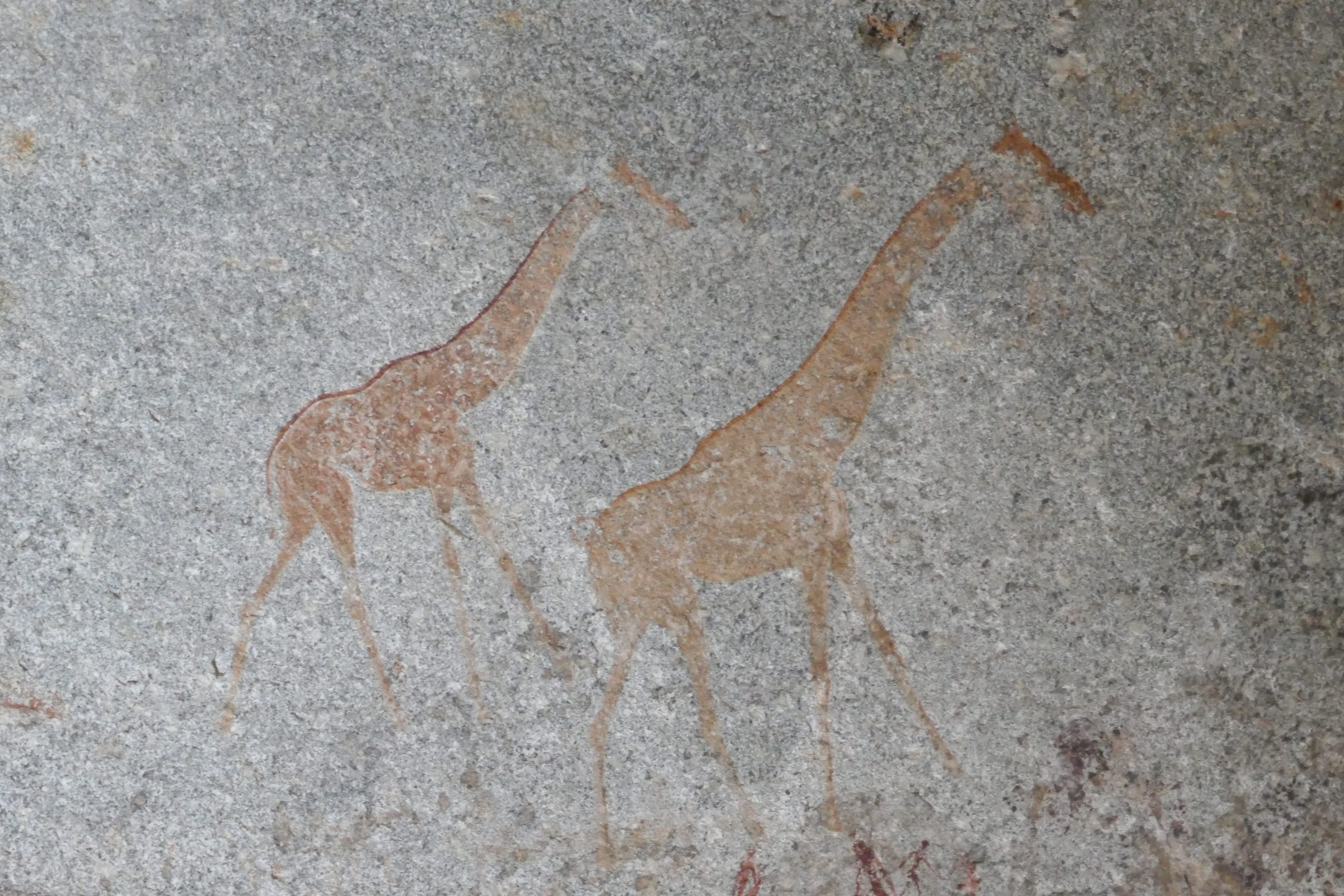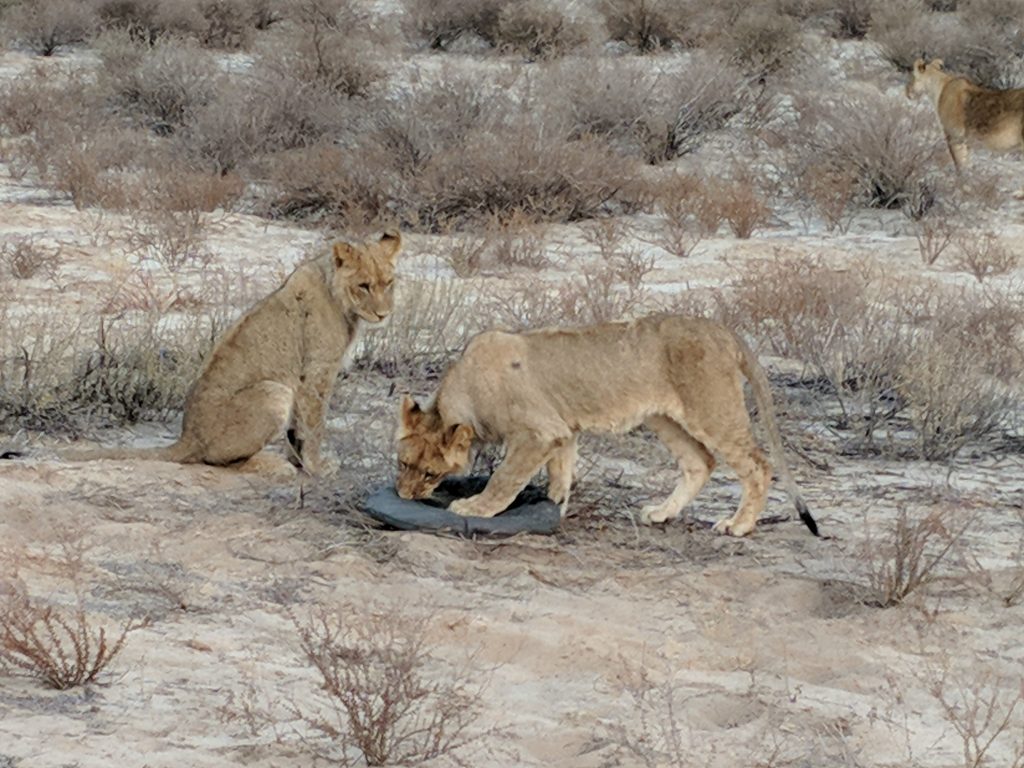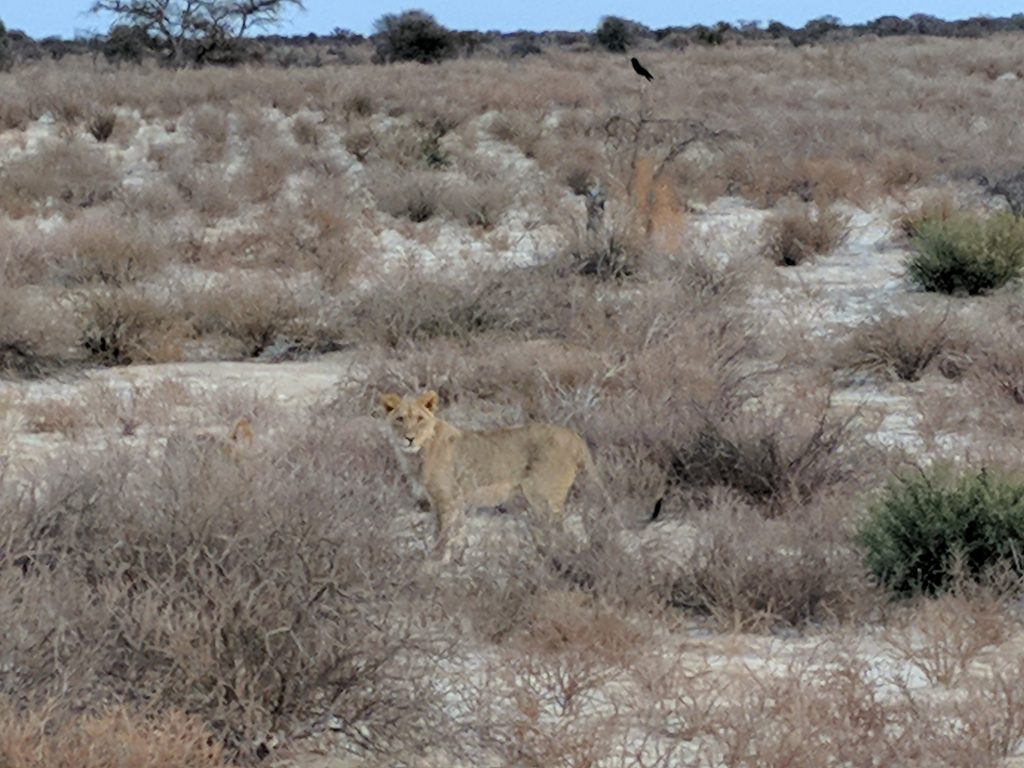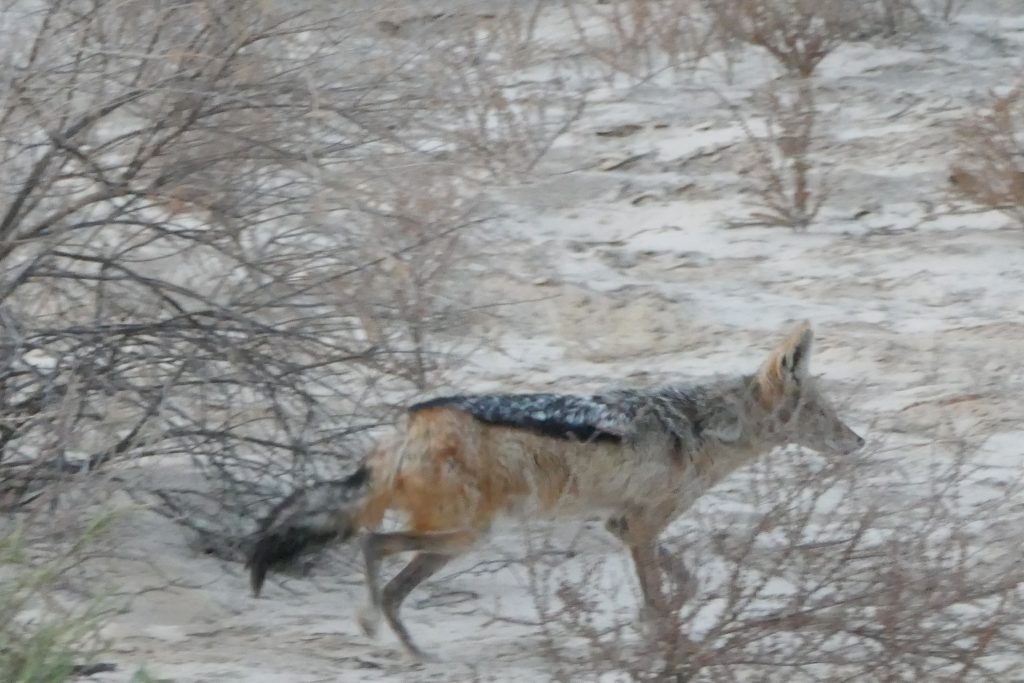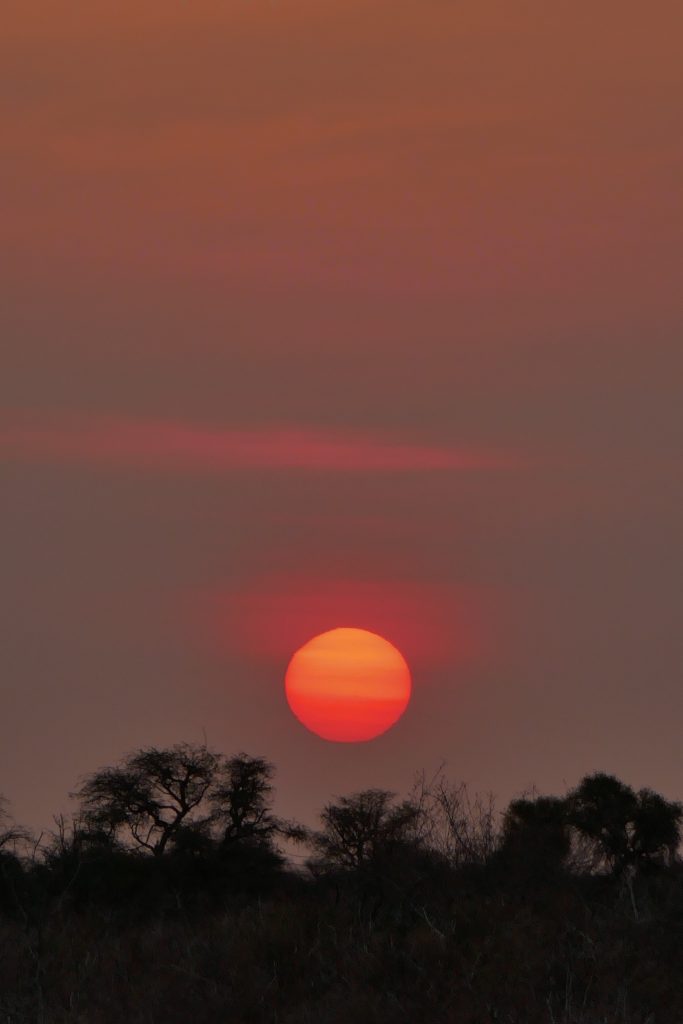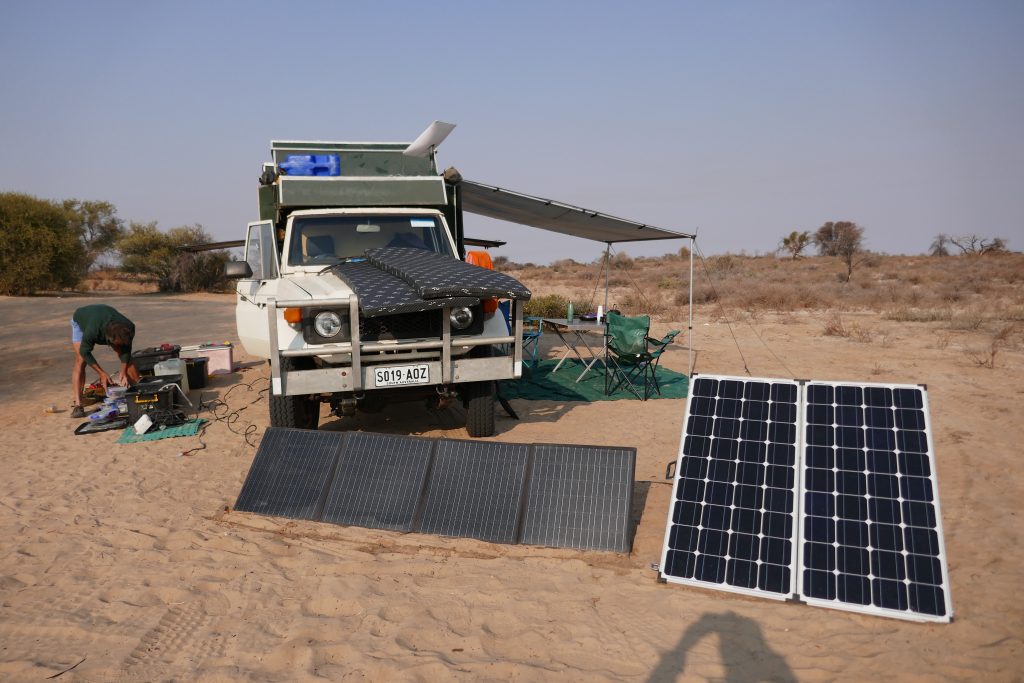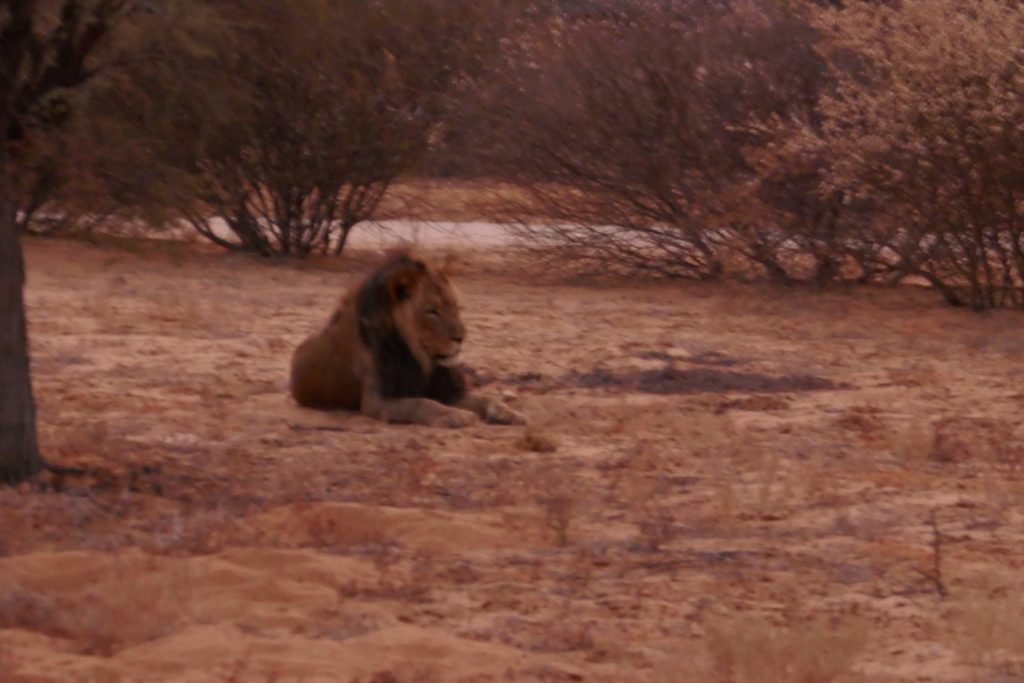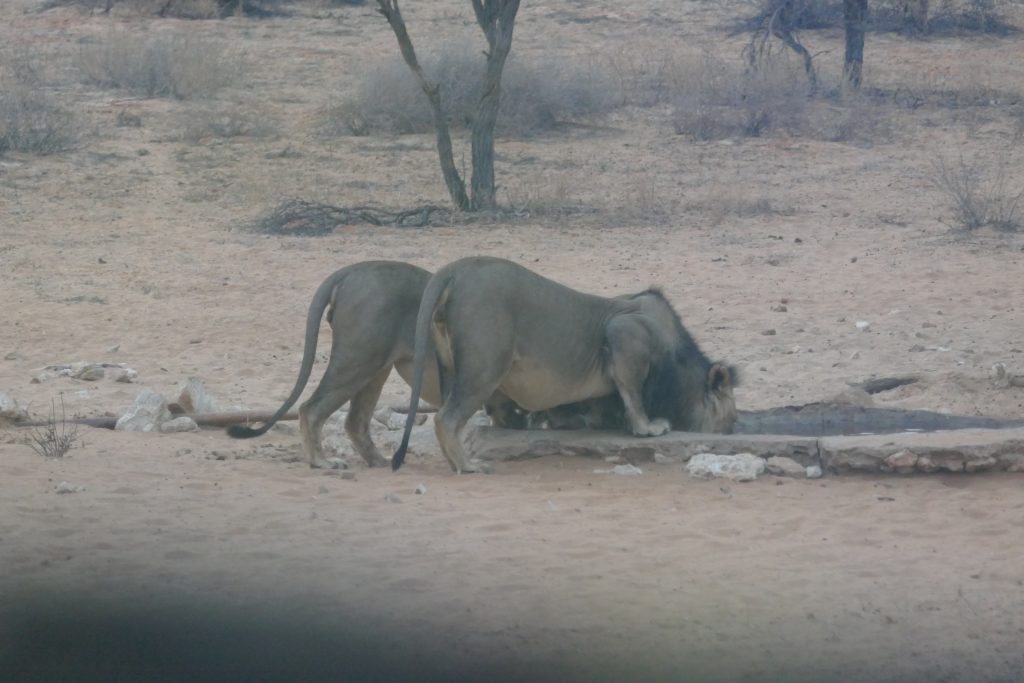Well I am deep in the Kalahari now. It is 72km from Khankhwe to Bape. I have not seen another vehicle now for two days, however I have gone through two villages much to my surprise.
I left Khankhwe about 9:30am. I am going to have to leave much earlier tomorrow morning. I have 123km to drive tomorrow, and the sand is much easier to drive on in the cool of the morning. The whole route is fairly sandy. I stopped part way and lowered my front tyre pressure even lower.
The first thing I encountered was a burnt out and rusting 4WD. I wonder what happened there.
17km out of Khankhwe suddenly there was a young girl running to me from the scrub. I stopped to talk to her, and within a couple of minutes her Mum and several siblings had turned up. There was a village about 1km away, and they were just out looking for animals. The girl really wanted my Bluetooth speaker that was sitting on the dash. She knew the brand name as well. I did point out she needed a phone to provide the music for the speaker, let alone a solar panel to charge it, none of which she had. She just wanted to dance to music, teenagers the same everywhere, even in the middle of nowhere. This village Kukumane had 50 people in it. No cell phones, internet or anything like that. No vehicles, they got their supplies by donkey cart that I guess would have been a two day drive away. They were a friendly lot, I took their picture and continued up to the village. I talked to a guy in the village. I didn’t totally understand but I think these were San people who didn’t want to relocate. They were living the nomadic herder lifestyle of their ancestors.
It was hot and slow driving in the sand. A lot of the time I was only doing 15kmh, if I was lucky in a stretch I got up to 25kmh.
The road started to deviate from the track4Africa map, and I found myself in another village. Within a minute or so I had a dozen people outside my window. They were friendly, told me how to rejoin the road, and I was on my way.
Another 20km or so and I arrived and Bape campsite. This campsite is just a clearing, no drop toilet or anything. It is wilderness.
